
Essays About Creativity: Top 5 Examples and 7 Prompts
Creativity helps us understand and solve problems in different ways. Discover our top essays about creativity examples and use our prompts for your writing.
Albert Einstein defines creativity as “seeing what others see and thinking what others have not thought.” But what makes it such a popular topic to write about? Every person has a creative view and opinion on something, but not everyone knows how to express it. Writing utilizes ideas and imagination to produce written pieces, such as essays.
Creativity reinforces not only new views but also innovation around the world. Because creativity is a broad topic to write about, you’ll need several resources to help you narrow down what you want to discuss in your essay.
5 Essay Examples
1. way to foster creativity in young children by anonymous on ivypanda.com, 2. phenomenon of creativity and success by anonymous on ivypanda.com, 3. do schools kill creativity: essay on traditional education by anonymous on gradesfixer.com, 4. creativity in dreams essay by writer pete, 5. the importance of creativity in higher education by anonymous on gradesfixer.com, 1. what is creativity, 2. how creativity affects our daily lives, 3. the impact of creativity on students, 4. the importance of creativity, 5. creativity: a product of perception, 6. types of creativity, 7. art and creativity.
“There are different ways to foster creativity in young children. They include different approaches to the problem of making children more self-reliant, more creative, and more interested in the process of receiving education, obtaining experience, achieving certain results in the sphere of self-study.”
The essay delves into the importance of promoting creativity by teaching music to young students. The author says music’s intention, rhythm, and organizational features help people understand performance, improve their mood, and educate them about the world they live in, unlike noise. Music is an important area of life, so it is important to teach it correctly and inspire children.
Since music and creativity are both vital, the author notes that music teachers must find ways to facilitate ventures to enhance their students’ creativity. The author also believes that teachers must perform their duties appropriately and focus on shaping their students’ behavior, personality, and worldview. You might be interested in these articles about art .
“Over the past few decades, creativity has evolved from a characteristic normally associated with artistic activities into a quality that is found in people of various professions. However, in the 21st century, creativity has become a rather controversial issue.”
The author discusses that while creativity dramatically contributes to the success of individuals and companies, creativity in the 21st-century workplace still has mixed reception. They mention that creativity leads to new ideas and innovations, helps solve complex problems, and makes great leaders.
However, some still see creative people as irrational, disorganized, and distracting in the workplace. This often results in companies rejecting applicants with this quality. Ultimately, the writer believes creativity is vital in all organizations today. Hiring people with this unique trait is highly beneficial and essential to achieving the company’s goals. For more inspiration, check out these essays about achievement and essays about curiosity .
“… the traditional education system has caused much controversy since the beginning of formal education because traditional education can hurt children’s ability to think creatively, innovate, and develop fascinating minds.”
The essay discusses how school rules and norms affect students’ expression of true individuality. The author mentions that today’s schools focus on students’ test performance, memorization, and compliance more than their aspirations and talents, preventing students from practicing and enhancing their creativity.
The author uses various articles, shows, and situations to elaborate on how schools kill a student’s creativity by forcing them to follow a specific curriculum as a means to succeed in life. It kills the student’s creativity as they become “robots” with the same beliefs, knowledge, and values. According to the writer, killing a child’s creativity leads to a lack of motivation and a wrong career direction.
“Creativity is enhanced whether one chooses to pay attention to it, or not. Each person has the capacity to learn much from their creative dreaming, if they would only think more creatively and openly when awake.”
The essay contains various studies to support claims about people being more creative when asleep. According to the author, the human brain processes more information when dreaming than in the waking state. While the brainstem is inactive, it responds to PGO Waves that trigger the human CMPG, which puts images into the dream to move. The author discusses two main perspectives to discuss how creative dreaming occurs.
First, creativity is enhanced when a person sleeps, not through dreaming but because the mind is free from stress, making the brain more focused on thinking and creating images. The second is that the dreaming mind gathers and processes more information than the human brain unconsciously accumulates daily. The author states that creativity helps express feelings and believes people should not take their creativity in dreams for granted.
“When students have the opportunity to be creative, they’ll have the freedom to express themselves however they want, which satisfies them and drives them to work hard.”
The essay focuses on how the role of creativity is getting slimmer as a student enters higher education. To explain the importance of creativity, the author shares their experience showing how elementary schools focus more on improving and training students’ creativity than higher education. Although rules and restrictions are essential in higher education, students should still practice creativity because it enhances their ability to think and quickly adapt to different situations.
If you want to use the latest grammar software, read our guide to using an AI grammar checker .
7 Prompts for Essays About Creativity
Creativity is an important topic that significantly affects an individual’s development. For this prompt, discuss the meaning of creativity according to experts versus the personal interpretation of creative individuals. Compare these explanations and add your opinion on these similarities and differences. You can even discuss creativity in your life and how you practice creativity in your hobbies, interests, and education.
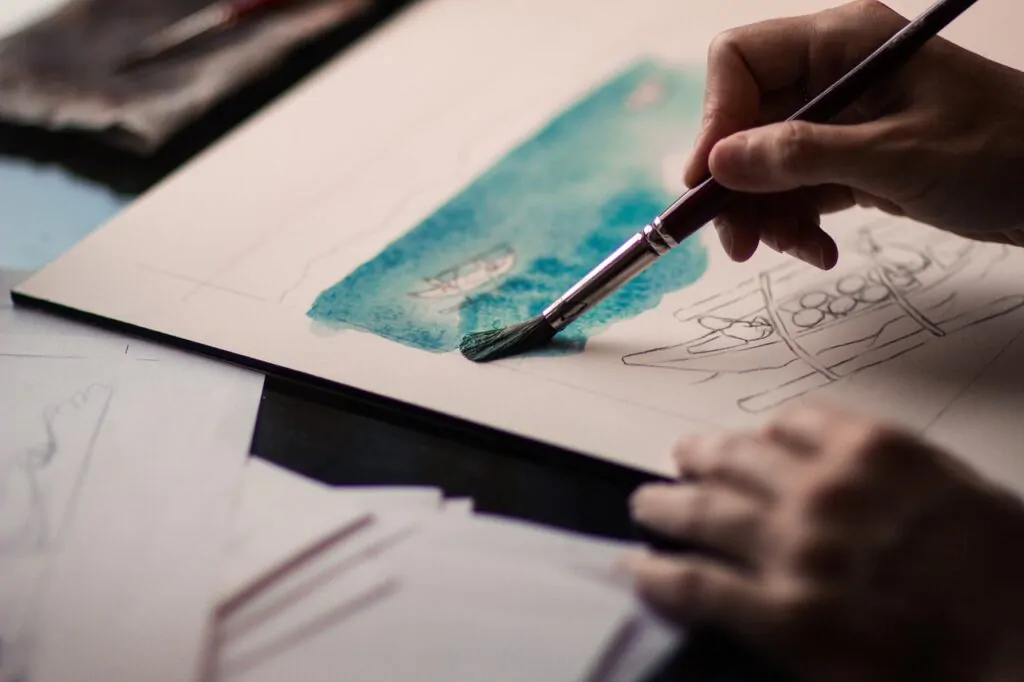
There are several impacts of creativity in one’s life. It improves mental health, strengthens the immune system, and affects one’s ability to solve problems in school and real life. Sometimes, being creative helps us be more open to various perspectives to reduce our biases.
Use this prompt to write about a specific situation you experienced where creativity made you more innovative, inventive, or imaginative. Discuss these particular moments by pointing out creativity’s impact on your goal and how things would differ without creativity. You may also be interested in learning about the different types of creativity .
Creativity significantly impacts students’ enthusiasm and feeling of belongingness as they share their passion. Additionally, creativity’s effects stretch to students’ career choices and mental health.
Use this prompt to start a discussion of the pros and cons of creativity with students. Give examples where a student’s creativity leads to their success or failure. You can also share your observations as a guardian or a student.
Sometimes, when we lose touch with our creative side, our viewpoint becomes shallow. Creativity not only works for art but also broadens everyone’s perspectives in life.
For this prompt, speak about how creativity matters and prove its importance by providing a situation. Theorize or discuss how creative people and people who fail to increase their creativity respond to the case.
Perception is an underlying characteristic of creativity. It interprets what we observe, while creativity allows us to make sense of them. Use this prompt to define perception to the readers through the lens of creativity.
List your experience proving creativity is a product of perception. For example, people can have vastly different interpretations of a painting or sound depending on how they perceive it.
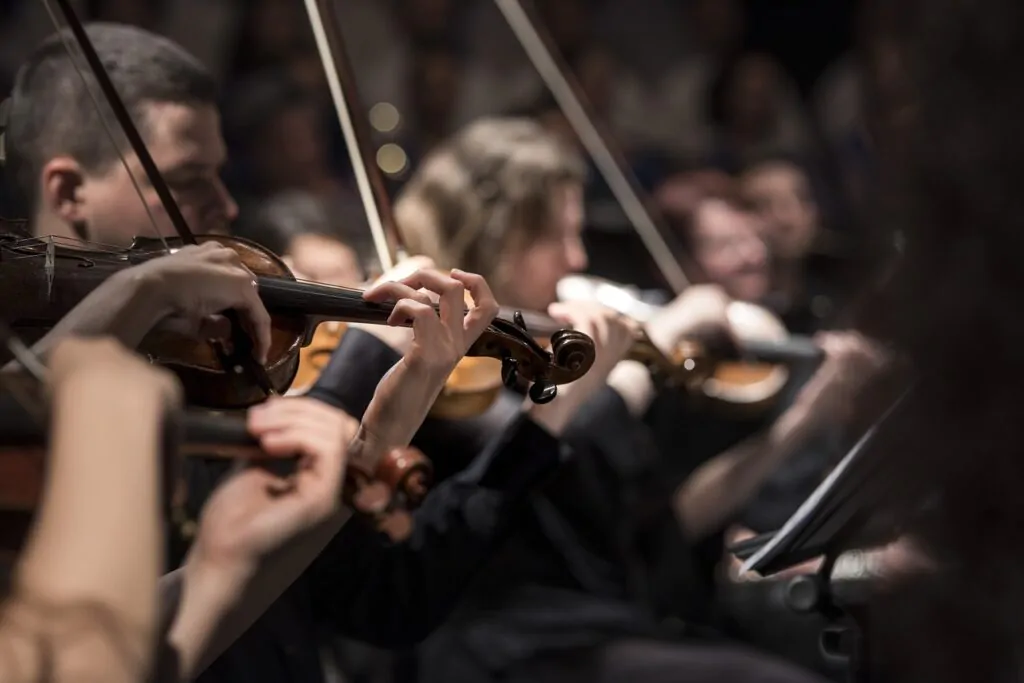
There are several types of creativity, some people believe creativity is a natural talent, but others say it can be cultivated. In this prompt, briefly define creativity and identify each type, such as musical, artistic, or logical.
Discuss how creativity can be taught and cultivated, and look into how some people are naturally creative. In your essay, use real-life examples; this could be someone you know who has studied a creative subject or a friend who is a naturally creative songwriter.
When people say creativity, they usually think about art because it involves imaginative and expressive actions. Art strongly indicates a person’s ongoing effort and emotional power.
To write this essay effectively, show how art relates to a person’s creativity. Briefly explain creativity and art and incorporate the factors that link these two. Note that art can be anything from contemporary dance and music to sculptures and paintings. For help with your essay, check our round-up of best essay writing apps .

Maria Caballero is a freelance writer who has been writing since high school. She believes that to be a writer doesn't only refer to excellent syntax and semantics but also knowing how to weave words together to communicate to any reader effectively.
View all posts

How Art Makes Us More Human: Why Being Creative is So Important in Life

Art is an important part of life, as it helps us to explore our creativity and express ourselves in unique ways. Art is more than just a form of expression - it’s a way of understanding the world and our place in it. In this blog post, we’ll discuss the psychological, social, and cognitive benefits of creating art and how it can bring joy and purpose to our lives.
What is art?
Art is a form of expression that values creativity and self-expression. It can take many forms, from paintings and sculptures to photography and even digital art. Art has the power to move us, to make us feel something, and to tell stories. Art can be used as a way of connecting with ourselves and with each other, and its power lies in its ability to inspire, create joy, and provoke thought. Art is an expression of the human experience, and its value lies in its ability to bring people together.
The connection between art and emotion
The value of art lies in its ability to evoke emotion. Whether you’re looking at a painting, watching a performance, or listening to music, art allows us to experience a range of emotions from joy to sorrow and everything in between. Art can help us make sense of our own emotions and gain a better understanding of how other people are feeling. It can even bring us closer together as it enables us to feel connected with the artist, even if we have never met them. When we interact with art, it can often spark a dialogue, creating a feeling of understanding and empathy within us.
One way in which art can be especially powerful is when it reflects our personal experiences and values. By connecting with a piece of art that speaks to our values, we can often feel a strong emotional connection with it, enabling us to recognize ourselves in the work and appreciate its beauty and meaning.
The link between art and mental health
Art can be an incredibly powerful tool in helping us to manage our mental health and well-being. Studies have found that art can reduce stress, increase self-esteem, and improve our ability to cope with difficult emotions. Art provides a safe space for us to express our thoughts and feelings, allowing us to connect with ourselves on a deeper level.
One of the main ways that art benefits mental health is through its ability to help us process and make sense of our emotions. Art enables us to externalize our inner struggles, allowing us to make sense of them in a new way. By engaging in creative activities, we can gain insight into our own feelings, giving us the opportunity to recognize patterns and reflect on them in a non-judgmental manner. This can help us to gain a better understanding of our emotions and allow us to find healthier ways of managing them.
Art can also help to decrease symptoms of depression and anxiety. Studies have found that engaging in creative activities such as painting, drawing, or sculpting can reduce symptoms of both depression and anxiety. It also can increase positive moods and overall life satisfaction. In addition, engaging in art can give us a sense of control over our lives, providing us with the opportunity to express ourselves without fear of judgment.
Finally, creating art can provide a sense of purpose and accomplishment, helping us to feel connected to something larger than ourselves. Art gives us a way to channel our energy into something meaningful, allowing us to have a tangible outcome at the end of our creative journey. The act of creation itself can be incredibly empowering, giving us the confidence to take on new challenges and set goals for ourselves.
Overall, engaging in art has been proven to have a positive impact on mental health. Through its ability to help us process emotions, decrease symptoms of depression and anxiety, and provide us with a sense of purpose and accomplishment, art has the power to truly transform our lives.
The benefits of creating art
Creating art can be an immensely rewarding experience that has both psychological and physical benefits. It can provide a sense of purpose, satisfaction, and accomplishment. Art can also help reduce stress, build self-confidence, and improve problem solving skills.
Art can be used to express feelings and emotions, helping to better understand and cope with difficult experiences. It can also be used to relieve anxiety, improve mental health, and enhance positive self-image. Additionally, engaging in creative activities encourages creative thinking, which can foster innovation and creativity in other areas of life.
Creating art can also improve physical well-being. It has been linked to reducing chronic pain and boosting the immune system. It can also help with motor coordination, providing relief for conditions such as carpal tunnel syndrome. Furthermore, it can help with hand-eye coordination, increasing dexterity and making everyday tasks easier.
Finally, creating art is a great way to relax and unwind after a long day. It can provide an outlet for pent-up emotions and help to restore a sense of balance and wellbeing. Even if your work is not immediately appreciated, it’s important to remember that art is subjective and it should be created for yourself, not for the approval of others.
The power of art in storytelling
Storytelling is a powerful tool for communication, and art is an important part of this process. Through art, we can express ourselves in ways that words alone cannot do justice to. Art allows us to show the emotion behind our stories, to add nuance and depth to our tales, and to create visuals that can leave a lasting impression.
Stories told through art have a special power. Whether it's through painting, drawing, sculpture, or even film, art has the potential to bring our stories to life in a way that words simply cannot do. With art, we can bring our characters and stories to life in vivid detail, making them more vivid and alive than if we were to tell the story with just words. We can also add layers of symbolism and meaning to our stories which can make them more meaningful and powerful.
Art has been used as a storytelling device for thousands of years. Ancient cultures used drawings and sculptures to tell their stories, and today, the tradition continues with all forms of visual arts. From street art to museum installations, art is used to tell stories of cultures, histories, beliefs, and emotions. By using art to tell stories, we can move people emotionally and capture their attention in a unique way.
In today's world, where we are bombarded with information from all sides, it can be hard to stand out. Art gives us the chance to do that in a powerful way. By creating art, we can tell stories that resonate with people, inspiring them and showing them something new. The power of storytelling through art is immense and should not be underestimated.
The importance of art in education
Art plays an important role in education, as it encourages creative thinking and provides a platform for students to express their feelings and ideas. It can also be used as a form of communication, allowing students to interpret and create meaning from what they observe. Additionally, the visual representation of art helps children to develop skills such as analyzing information, forming arguments, and making connections.
In the classroom, art can help to introduce new concepts, convey complex topics, and build relationships between students. By incorporating art into lesson plans, teachers are able to engage students in learning and make the material more interesting. Art also helps students to identify patterns and practice critical thinking skills by exploring how elements interact to create a bigger picture.
Furthermore, art allows for students to practice collaboration, problem-solving, and social interaction. Through group projects, students can work together to plan, organize, and execute a project from start to finish. This helps to teach kids essential teamwork skills while also giving them the opportunity to explore their individual strengths and weaknesses.
Overall, art is an integral part of education that helps students develop important skills and encourages creative expression. It is an important tool for teaching and can be used in various ways to make learning more engaging and meaningful.
The role of art in social change
The power of art in creating social change is undeniable. It has been used throughout history as a tool to inspire, educate, and challenge the status quo. Art can be used to bring attention to injustices, advocate for different perspectives, and to create positive cultural shifts.
One example of how art has been used to inspire social change is through protest art. This type of art is often seen at protests and marches, or used to create powerful visuals for political campaigns. Protest art can be anything from signs and banners to sculptures, graffiti, or public installations. It can also take the form of music, film, theater, and literature. By combining art and activism, people are able to communicate their message in an effective way that captures the attention of the public.
Another example of how art can be used to create social change is through digital media platforms such as Instagram and Twitter. These platforms allow anyone with an internet connection to share their creative works and connect with other like-minded individuals. Art has been used on these platforms to raise awareness about important issues, tell stories that inspire change, and even challenge oppressive systems.
Finally, art can be used to help those who are oppressed find strength and resilience. Art provides a platform for those who are marginalized to tell their stories and express their experiences in a safe space. Through art, people are able to connect with each other and find solidarity in the face of adversity.
Art plays an important role in social change and is an invaluable tool for anyone looking to create positive impact in the world. Whether it’s used to create powerful visuals for a protest or to tell stories that inspire action, art has the power to bring people together and spark meaningful conversations about important topics.
Art is essential for all our lives
No matter who you are or where you come from, art plays a vital role in helping us make sense of our lives and the world around us. Art helps us to express our emotions, to communicate our thoughts and feelings, and to explore the depths of our imaginations. By engaging with art, we can discover more about ourselves and the world around us, and cultivate empathy and understanding.
- Cultivate News
Recent Posts
March Volunteer of the Month: May Southavilai
Press Release: Announcing 2024 ArtPrize Education Partnership
Volunteer of the Month: Aude Shattuck
Hello! I really liked your article! You can be creative not only by making paintings, but you can also lead social networks in any manifestation and be an inspiration to other people. The most important manifestation of your creativity in social networks is to create content. Shoot videos, take photos, etc. To do this, I can recommend this article for the further development of your content and social networks.
An official website of the United States government
The .gov means it’s official. Federal government websites often end in .gov or .mil. Before sharing sensitive information, make sure you’re on a federal government site.
The site is secure. The https:// ensures that you are connecting to the official website and that any information you provide is encrypted and transmitted securely.
- Publications
- Account settings
Preview improvements coming to the PMC website in October 2024. Learn More or Try it out now .
- Advanced Search
- Journal List
- Int J Environ Res Public Health

Being Creative Makes You Happier: The Positive Effect of Creativity on Subjective Well-Being
Associated data.
The datasets generated during and/or analysis during the present study are available from the corresponding author on request.
The impact of happiness on creativity is well-established. However, little is known about the effect of creativity on well-being. Two studies were thus conducted to examine the impact of creativity on subjective well-being. In the first study, 256 undergraduate students (Study 1a) and 291 working adults (Study 1b) self-reported their creativity, stress, and subjective well-being. Hierarchical multiple regression analysis showed a positive relationship between creativity and subjective well-being after controlling the effect of self-perceived stress and demographics in both samples. Study 2 then employed an experimental design to examine the causal relationship between creativity and subjective well-being. Half of the 68 undergraduates underwent a creativity priming task followed by a divergent thinking test as well as self-reported stress and subjective well-being. The priming task was found to boost creative performance in the pilot study (Study 2a) and the actual study (Study 2b). Moreover, after controlling the effect of self-perceived stress, ANCOVA analysis showed that participants receiving the priming reported higher subjective well-being scores than their counterparts in the control group. The overall findings not only shed light on the facilitative effect of creativity on subjective well-being but also highlight the necessity of considering the reciprocal relationship of the two constructs in future research.
Studies have found a bidirectional relationship between creativity and well-being. On the one hand, well-being was found to promote creativity [ 1 , 2 , 3 , 4 ], on the other hand, creativity is conducive to well-being [ 5 , 6 , 7 ]. Nevertheless, the latter has received relatively little attention. Therefore, this research intended to investigate the beneficial effect of creativity on subjective well-being in the Malaysian context for two reasons. First, most of the past studies focused on happiness, positive affect/mood, psychological well-being, emotional well-being, or a combination of them. It is noteworthy that these constructs are conceptually different from subjective well-being. Specifically, unlike the abovementioned proxies that focus on the positive dimension, subjective well-being focuses on both positive and negative aspects of life as well as satisfaction with life [ 8 , 9 ]. Hence, it is essential to examine if creativity also contributes to subjective well-being. In addition, studies found cultural differences in the perception of creativity [ 10 , 11 ]. For instance, while novelty and usefulness are equally important in the West, usefulness has received more attention than novelty in the East [ 10 ]. As most of the past findings were derived from Western populations, it is essentially good to know if the same findings can be observed in Asian populations.
1. Creativity
Creativity is generally conceptualized as the ability to create products that are original and adaptive [ 12 ]. Nevertheless, originality alone is insufficient. To be considered creative, the output must also be applicable and useful to the problems at hand [ 13 ]. Indeed, empirical evidence supports that both novelty and usefulness are the two key ingredients of creativity [ 14 , 15 ]. Creativity is also regarded as a continuum as asserted by the Four C Model of creativity [ 16 ] that creativity ranges from mini-c (i.e., personally meaningful creativity), little-c (i.e., everyday creativity), Pro-c (i.e., professional creativity), to Big-C (i.e., eminent creativity).
Thus far, a variety of measurements have been proposed to capture the dynamic characteristics of creativity. Some researchers have focused on observable outputs such as involvement in creative activities and past achievements [ 17 ]. In a similar vein, the divergent thinking (DT) test has been extensively used as a proxy of creativity. Respondents were asked to generate as many solutions as possible to a given problem [ 18 ]. The solutions were then scored for fluency, flexibility, originality, and elaboration [ 19 , 20 ]. A meta-analysis supported that DT is a good predictor of creative achievement [ 21 ].
Meanwhile, self-reports with the advantages of cost-efficient and easy administration were commonly employed [ 22 , 23 , 24 ]. Tan et al. [ 11 ] developed the short form of the Kaufman Domains of Creativity Scale [ 25 ] with 20 items to help respondents indicate their belief of creativity relative to their peers in five different domains (e.g., scholarly, artistic). A self-rated creativity scale was also used for individuals to report their creative behaviors. For instance, Reiter-Palmon et al. [ 26 ] modified the items that were first developed for supervisors to evaluate the creativity of their employees [ 27 , 28 ] and for university students to report their perceptions of creativity in different domains (e.g., work, hobby). For example, the item “the employee suggests new way to achieve goals or objectives” was modified to “I suggest new way to achieve goals or objectives.” Similarly, Tan and Teo [ 29 ] modified the 13 items developed by Zhou and George [ 28 ] for undergraduate students in Malaysia to self-report their creativity. The modified self-rating items demonstrated good psychometric properties in the Malaysian context [ 15 ].
Notably, the consensual assessment technique (CAT) [ 30 ] was recognized as the gold standard for assessing the creativity level of a generated output (e.g., idea, performance). The CAT requires a panel of experts or professional individuals in the field to evaluate a particular product with the rationale that experts in a field can better identify elements that have made a creative contribution to the field.
2. Subjective Well-Being
Diener [ 31 ] has defined subjective well-being as individuals’ evaluation of their lives. He proposed the tripartite model of subjective well-being which consists of positive emotions, negative emotions, and satisfaction with life. Positive emotions include pleasant, happy, and joyful feelings, while negative emotions involve unpleasant, angry, and sad feelings [ 9 ]. Life satisfaction refers to the satisfaction of an individual with every aspect of his/her life [ 3 ]. The key components of the tripartite model of subjective well-being are attributed to those who have used the theory in later studies [ 32 , 33 ]. Accordingly, individuals with high levels of subjective well-being tend to have more positive emotions, less negative emotions, and high life satisfaction [ 34 ].
Numerous studies have shown positive effects of subjective well-being on physiological health. For instance, literature has revealed that happy individuals have better self-rated physical health [ 35 ]. In addition, subjective well-being is also linked with a reduced likelihood of all-cause morbidity among the older population [ 36 ]. Besides being one of the protective factors of cardiovascular disease [ 37 , 38 ] and incident cardiometabolic conditions [ 39 ], subjective well-being is also linked with positive outcomes in the workplace such as work-related productivity and success [ 40 , 41 ], job satisfaction [ 42 ], and professional performance and low absenteeism [ 43 ]. Taken together, having a high level of subjective well-being is important for both physical health and workplace performance. Other than that, well-being is also linked with one of the important mental abilities—creativity.
3. Creativity and Well-Being
The literature suggests a bidirectional relationship between creativity and well-being whereby positive affect, one of the components of well-being, was found to be related to creativity [ 1 , 2 , 3 , 4 , 44 ]. According to the broaden-and-build theory [ 45 ], positive states of moods such as joy and hope motivate people to explore and accept new information which can improve the flexibility of cognition and creativity [ 46 , 47 ]. People feel safe and secure when they are in positive emotions, and hence, are more likely to think divergently without fear [ 48 ]. Moreover, people are more open to changes when they are in positive moods [ 49 ]. On the contrary, negative emotions lead to people feeling insecure and view their environment as threatening. Therefore, individuals tend to use a more effortful and detail-oriented information processing style to deal with the situation [ 2 ]. Consequently, negative emotions reduce the willingness to take a risk and make unusual associations that impair their performance in creative problem-solving tasks [ 50 ]. Supporting the theoretical justification, self-report of creativity and (positive and negative) emotions collected from 658 undergraduate students using the Internet daily diary method across 13 days indicated that the participants reported higher creativity on days with higher levels of positive emotions [ 51 ]. In addition, literature also suggests that life satisfaction may strengthen individual effort and creativity. Specifically, individuals who are more satisfied with their lives are more willing to invest more effort in completing their jobs and making changes to solve problems [ 52 ].
Conversely, creativity was found to play a constructive role in well-being [ 53 , 54 , 55 ]. Chermahini and Hommel [ 56 ] randomly assigned university students to one of the four creativity tasks (i.e., divergent thinking, preparation for divergent thinking, convergent thinking, and preparation for convergent thinking). All participants reported their moods before and after working on the creativity task. Results showed that participants in the divergent thinking group reported a significantly higher score in positive mood than the other groups. Silvia et al. [ 57 ] lent further supports to the positive relationship between creativity and well-being using the experience-sampling method. Seventy-nine university students self-reported their emotions and involvement in creative activities (yes vs. no) for 7 days through a phone-based survey. The researchers found that participants were happier and more active when they were performing something creative. Similarly, supervisor-rated creativity was found to have a positive relationship with positive affect reported by employees (Study 1) and that employee-rated creativity reported at Time 1 predicted positive effect at work measured three months after Time 1 (Study 2) [ 58 ].
Although the abovementioned studies offer supports to the advantageous effect of creativity on positive affect, it is remarkable that the advantageous effect of creativity is not limited to the positive effect but the overall well-being. Puig et al. [ 59 ], for instance, found that breast cancer patients who received creative arts therapy intervention reported an improvement in the sense of psychological well-being. One of the reasons is the patients see their breast cancer experience as an opportunity for personal transformation and growth. In the same vein, individuals with creative occupations (e.g., town planners, architects, graphic designers) showed higher levels of well-being (e.g., life satisfaction, happiness) compared to those with non-creative professions (e.g., banker, insurance agent, accountant) [ 60 ]. Likewise, university students in Iran who reported high creativity and self-efficacy also reported high subjective well-being indexed by emotional, psychological, and social well-being [ 6 ]. The findings are consistent with the speculation of the flow theory [ 61 ]. Specifically, engaging in creative activities (e.g., composing a song, writing a script) allows individuals to enter flow states which are conducive to one’s life satisfaction and psychological well-being [ 62 ].
4. Overview of the Research
Building on the previous findings that creativity is positively associated with different proxies of well-being (e.g., happiness, positive mood, psychological well-being), the present research aimed to clarify the impact of creativity on subjective well-being. To be consistent with the focus on individual (perceived) well-being, we concentrated on mini-c and little-c in the present study.
Two studies were conducted to fulfill the objectives. Using a cross-sectional design, Study 1 examined the relationship between self-reported creativity (i.e., mini-c) and subjective well-being among undergraduate students (Study 1a) and working adults (Study 1b) respectively using hierarchical multiple regression. Meanwhile, Study 2 employed an experimental design to clarify the causal relationship between creativity evaluated by others (i.e., little-c) and subjective well-being using Analysis of covariate (ANCOVA). Unlike Study 1, creativity was induced in Study 2 by a priming task. The effectiveness of the priming task was tested and confirmed in a pilot study (Study 2a) and the main study (Study 2b) respectively using a divergent thinking task. All analyses were conducted using IBM SPSS Statistics 22. Ethical approval was obtained from the Scientific and Ethical Review Committee of Universiti Tunku Abdul Rahman (Ref no: U/SERC/92/2016). Informed consent was obtained from all participants.
The results are expected to offer empirical evidence to the beneficial cross-cultural effect of creativity on subjective well-being. Furthermore, the present study goes beyond past findings [ 56 ] to clarify the effect of creativity on subjective well-being by measuring and statistically controlling (perceived) stress. There are two merits to do so. First, as stress is detrimental to subjective well-being [ 63 , 64 ], stress may hinder the beneficial effect of creativity on subjective well-being. Therefore, controlling for stress will exclude the possible confounding effect of stress on the relationship between creativity and subjective well-being. Second, if creativity continues to show a positive impact on subjective well-being even after controlling for stress, the result implies that creativity contributes to subjective well-being directly. On the other hand, if the relationship between creativity and subjective well-being shifts from statistically significant to insignificant after controlling for stress, one of the possibilities is that stress could be a potential mediator. In other words, creativity benefits subjective well-being through stress reduction.
5. Study 1: Cross-Sectional Study
Participants and procedure.
A total of 256 undergraduate students (Study 1a) and 291 working adults (Study 1b) in Malaysia participated in Study 1. Study 1a consisted of 154 females, while Study 1b consisted of 187 females. Participants aged 18 to 54 years old ( M = 21.76, SD = 2.53) participated in Study 1a and those from 19 to 64 years old ( M = 35.20, SD = 9.96) joined Study 1b. Most of the participants in both samples identified themselves as Chinese (81.9%), followed by Indians (8.8%), Malays (8.4%), and others (0.9%). In terms of religion, most of the participants were Buddhists, Taoists or Confucianists (70%), followed by Christians or Protestants (11.70%), Muslims (8.227%), Hindus (6.947%), and Atheists (3.108%). The inclusion criteria for Study 1a were being 18 years old and above and is currently enrolled in a bacherlor’s degree program, while the inclusion criteria for study 1b were being 18 years old and above and is currently employed or self-employed.
Participants from Study 1a and 1b were recruited by in-person method (e.g., researchers advertised the study to undergraduate students by presenting a poster in class) and online method (e.g., posting the recruitment advertisement on social networking sites such as Facebook and Twitter). All participants were screened to make sure they fulfill all inclusion criteria. Then, participants were briefed on the research objectives and procedure either by the researchers or by reading the information sheet on the first page of the online survey. Participants who gave their consent completed the survey in hardcopy or online.
6. Measurements
6.1. subjective well-being.
Self-reported subjective well-being was measured by the Scale of Positive and Negative Experience (SPANE) [ 9 ] and Satisfaction with Life Scale (SWLS) [ 8 ]. The SPANE requires participants to report their positive and negative feelings during the past week on 12 items (six items assessing positive and negative feelings). Each item was rated on a 5-point Likert scale ranging from 1 ( never ) to 5 ( always ). The positive and negative scales were scored separately where the total positive score (SPANE-P) and negative score (SPANE-N) ranged from 6 to 30, respectively. Additionally, affect balance scores (SPANE-B) were computed by subtracting the negative score from the positive score with the score ranging from −24 to 24 [ 9 ]. The SPANE was found to have good psychometric properties in a past study [ 65 ]: Cronbach’s coefficient ranged from 0.89 to 0.90 for SPANE-P, 0.84 for SPANE-N, and 0.88 for SPANE-B. SPANE is applicable for working adults and undergraduate students [ 9 ]. On the other hand, the SWLS is a 5-item scale designed to measure global cognitive judgments of one’s life satisfaction. Participants were asked to respond to each item on a 7-point Likert scale ranging from 1 (strongly disagree) to 7 (strongly agree). One of the items is “In most ways my life is close to my ideal”. Higher total scores would indicate more satisfaction with life and vice versa. Overall, the SWLS showed good internal consistency (α = 0.87 and the 2-month test-retest reliability was 0.82) and validity [ 66 ]. According to Li et al. [ 67 ], the total score of subjective well-being is derived as SWLS (life satisfaction) + SPANE-P (positive feeling)—SPANE N (negative feeling).
6.2. Creativity
Following Reiter-Palmon and colleagues’ [ 26 ] practice, we used the 15-item self-perceptions of creativity scale for participants to indicate their perceptions of creative ability using a 5-point Likert scale (1 = strongly disagree, 5 = strongly agree). By summing up all the item scores, higher total scores would indicate higher levels of creativity. The scale reported Cronbach’s alpha of 0.91 for its internal consistency [ 26 ]. A sample item was “ I utilize creative ideas that might improve conditions in my life ”.
6.3. Controlled Variable
As studies on different populations have consistently found that stress is negatively associated with happiness [ 68 , 69 ] and subjective well-being [ 63 , 64 ] stress was included as a covariate variable in the present study to exclude its confounding effect on the relationship between creativity and subjective well-being. The 10-item Perceived Stress Scale (PSS) [ 70 ] was thus employed for participants to self-report their stress levels in the past week using a 5-point Likert scale (0 = never, 4 = very often). A total score is obtained by reversing the scores of the four positive items (items 4, 5, 7, and 8) and then summing up all the item scores. The higher (total) ratings would indicate the higher levels of perceived stress [ 70 ].
7. Results and Discussion
7.1. study 1a: undergraduate students.
Table 1 shows descriptive statistics, correlation, and Cronbach alpha coefficient for each tested variable. Following Kim’s [ 71 ] suggestion for medium-sized samples (50 < n < 300), the normality assumption was met as the z values of skewness (i.e., skewness divided by standard error) and kurtosis were within 3.29. Pearson correlation analysis showed that the relationship between subjective well-being and self-perceived creativity was positive and statistically significant. Furthermore, a significant negative relationship was observed between subjective well-being and self-perceived stress, as well as between self-perceived creativity and self-perceived stress.
Means, Standard Deviations, Correlation, and z values of Skewness and Kurtosis Among Variables for Study 1.
Note. SWLS = Satisfaction with Life Scale, SPANE = Scale of Positive and Negative Experience, SWB = subjective well-being, SPS = self-perceived stress, SPC = self-perceived creativity. ** p < 0.01, *** p < 0.001.
A two-step hierarchical multiple regression was conducted with subjective well-being as the dependent variable. Gender (male as reference), race (Chinese as reference), religion (Christian as reference), and self-perceived stress were entered at the first step (i.e., Model 1), while self-perceived creativity was entered at the second step (i.e., Model 2). The result showed that Model 1 was statistically significant, F (8, 247) = 21.65, p < 0.001 and accounted for 41.2% (adjusted R-square = 0.393) of the variance of subjective well-being. However, among the variables, only self-perceived stress had a significant relationship with subjective well-being, (standardized coefficient) β = −0.64, SE = 0.099, t = 12.84, p < 0.001, 95% confidence interval (CI) [−1.46, −1.07]. Similarly, Model 2 was also significant, F (9, 246) = 21.93, p < 0.001, and explained 44.5% of variance (adjusted R 2 = 0.425), ∆ R 2 = 0.033, ∆ F (1, 246) = 14.61, p < 0.001. Notably, after controlling the effect of demographic and self-perceived stress, self-perceived creativity displayed a positive relationship with subjective well-being, β = 0.20, SE = 0.068, t = 3.82, p < 0.001, 95% CI [0.13, 0.39].
7.2. Study 1b: Working Adults
Similarly, all the scales were found to have good internal consistency with target variables being normally distributed (see Table 1 ). There was a significant positive relationship between subjective well-being and self-perceived creativity. Meanwhile, subjective well-being and self-perceived creativity were negatively associated with self-perceived stress, respectively.
Model 1 was found statistically significant, F (9, 281) = 22.39, p < 0.001 and accounted for 41.8% (adjusted R 2 = 0.399) of the variance of subjective well-being. Among the variables, self-perceived stress had a significant relationship with subjective well-being, β = −0.64, SE = 0.093, t = 0.13.72, p < 0.001, 95% CI [−1.45, −1.09]. Model 2 was also significant, F (10, 280) = 25.11, p < 0.001, and accounted for 47.3% (adjusted R 2 = 0.454) of variance, ∆ R 2 = 0.055, ∆ F (1, 280) = 29.27, p < 0.001. Self-perceived creativity was found to have a positive relationship with subjective well-being after controlling for demographic and self-perceived stress, β = 0.25, SE = 0.069, t = 5.41, p < 0.001, 95% CI [0.24, 0.51].
7.3. Discussion
Overall, the two studies consistently showed that self-rated creativity has a positive relationship with subjective well-being, even after statistically controlling the impact of self-perceived stress. The congruence not only offers preliminary support to the hypothesis but also indicates that the positive relationship between creativity and SWB applies to both young adults and working adults. Nevertheless, the results derived from such a cross-sectional design are unable to identify the causal relationship and are prone to common method bias as well as social desirability of maintaining a positive image. In the same vein, the design does not allow us to clarify the confounding effect of individual differences on the results. There is a possibility that the participants of the two studies have a higher level of creativity than the general. Thus, Study 2 was carried out to address the above-mentioned limitations and shed light on the causal relationship between creativity and subjective well-being using experimental design.
8. Study 2: Experimental Study
Study 2 aimed to investigate the causal relationship between creativity and subjective well-being using an experimental design. Creative performance was manipulated using a creativity priming task in which participants were instructed to describe their past creative behaviors. A pilot study (Study 2a) was first conducted to examine the effectiveness of the priming task, followed by the main study (Study 2b).
9. Study 2a: Validation of the Creativity Priming Task
9.1. participants and procedure.
A minimum of 30 participants is required for conducting a pilot study [ 72 ]. We successfully recruited 48 undergraduates (38 females, aged 19 to 28, M age = 22.23, SD = 1.60) in this study. The majority of the sample were Chinese and final year students.
The computer-based experiment was conducted in a group of two to five participants in a laboratory. Participants were told that it was a study on problem-solving skills and well-being. After giving their consent, half of the participants were randomly assigned to the experimental group and the other half to the control group. Participants in the experimental group underwent a priming task followed by a creativity task (both tasks were explained in the Instruments section). Meanwhile, those in the control group did not undergo the priming task but only the creativity task. After completing the creativity task, the researchers debriefed and thanked the participants. A total of 10 sessions were conducted and each session took about 15 min.
9.2. Instruments
Creativity priming task. Being creative requires the ability to inhibit the activation of conventional routes of thinking [ 73 ]. However, individuals are less likely to intentionally suppress the tendency to think conventionally [ 74 ]. For example, although participants were explicitly instructed to generate new and original ideas, they were still unconsciously copied some features of the samples provided and produced uncreative ideas [ 75 ]. While modifying thinking style intentionally is complicated, cognitive processes can be influenced by priming to get around the predominantly activated knowledge and memory. For instance, Sassenberg et al. [ 76 ] showed that the memory recalling method is conducive to creative performance. Compared to their counterparts who intentionally tried to be creative, participants who were reminded of their earlier creative behaviors overcame inadvertent plagiarism and produced more creative ideas. The facilitative effect of the memory recalling method could be due to sample answers were not provided and thereby ruling out the impact of inadvertent plagiarism effect on the creativity task.
Given its effectiveness and advantages, the memory recalling method was employed in the present study. Our creativity priming task required participants to “briefly describe three situations in which they had behaved creatively” [ 74 ] in general in 5 min using English, Bahasa Malaysia, or Mandarin to minimize language barriers. Past studies have shown that the priming task is effective in stimulating a creative mindset [ 77 ] through the production of diverse, unique, and remotely associated ideas [ 74 ]. Such remembering and recalling creative activities involve transferring knowledge and information from long-term memory to working memory [ 78 ] and imaginatively reconstructing memories is related to creativity [ 79 ]. Moreover, the priming task is superior to the explicit instruction of being creative (with provided examples) as the induced creative mindset leads individuals to think differently and discard the influences of the given examples.
Creativity Task. The Guilford’s Alternative Uses Test (AUT) [ 80 ] was used to examine the effectiveness of the priming task. Participants were asked to complete the task individually by typing in the uses of stone(s) or rock(s) as many as possible in 5 min using their preferred language. Specifically, participants received the following instruction:
Please list the uses of stone/rock as many as possible. You are allowed to provide your answers in English, Bahasa Malaysia or Mandarin. You will automatically proceed to the next question after 5 min.
The responses were evaluated for originality, fluency, flexibility, and elaboration [ 80 ]. To assess originality, any responses that were given by only 1% of the participants would receive two points, while responses that were given by more than 5% of the participants received one point. In Study 2a, however, two marks were given to responses mentioned by one participant because 1% of the sample size (i.e., 48 participants) is less than 1. Fluency was represented by the total number of (non-repeated and sensible) answers given. Flexibility was evaluated by the number of categories that the participants used. For example, garden decoration and house decoration were considered as the same category, while house or building and fire starter were considered as two different categories. Finally, elaboration was determined by the number of details provided. Responses elaborated with functions or examples received one point, while two points were given for any further explanations [ 81 ]. Such priming manipulation is considered effective if the participants in the experimental group scored higher than those in the control group in the AUT.
In the study, the first three authors evaluated the participants’ responses to the AUT. Two of the raters were unaware of the grouping of participants and participants were coded numerically. All the raters share a similar cultural background with the participants. Prior to the commencement of the scoring process, the raters were asked to go through the responses to eliminate the repeated and non-sensical answers respectively. As the scoring method is rather objective (e.g., computing the total number of responses), the raters did not receive a particular definition of creativity.
Intraclass Correlation Coefficient (ICC) was used to measure inter-rater reliability to examine the impacts of individual differences on the rating scores. The result showed high consistency of the three raters in the evaluation results: ICC = 0.996, 95% CI [0.994, 0.998], p < 0.001 for originality, ICC = 0.998, 95% CI [0.997, 0.999], p < 0.001 for fluency, ICC = 0.986, 95% CI [0.977, 0.991], p < 0.001 for flexibility, and ICC = 0.984, 95% CI [0.973, 0.991], p < 0.001 for elaboration. Therefore, a mean score for each of the four creativity components was obtained by averaging the scores of three raters. Moreover, Pearson correlation analysis showed that the four creativity components significantly and positively correlated with each other: 0.329 (the relationships of fluency with elaboration and originality) < r < 0.884 (between fluency and flexibility). Hence, a composite creativity score was generated by summing up the four creative components’ mean scores to represent the creativity of participants.
10. Results
Manipulation checking. An independent-sample t -test was conducted to examine the effectiveness of the creativity priming task. The result showed a significant difference in the (composite) creativity score between the experimental group ( M = 21.10, SD = 11.15) and the control group ( M = 14.14, SD = 7.74), t (41) = 2.51, p = 0.03, Cohen’s d = 0.73. The results support that the creativity priming task is effective in promoting creative performance.
11. Study 2b: Testing the Effect of Creativity on Subjective Well-Being
11.1. participants and procedure.
Another 68 undergraduates (50% female, aged 19 to 29 years old, M age = 21.97, SD = 1.41), who did not involve in Study 2a voluntarily participated in this experiment. The sample mainly comprised Chinese and final year students. The sample size was determined using G-Power analysis [ 82 ]. Using the following parameters: large effect size (Cohen’s f = 0.40), significant value (α) = 0.05, power (1—β) = 0.80, number of groups = 2, and number of covariates = 1, the recommended (total) sample size is 64.
After giving their consent, all participants answered the PSS. Then, half of the participants were randomly assigned to either the experimental group or the control group. The experimental group members underwent the creativity priming task first and followed by the AUT, whereas the control group members responded to the AUT directly without going through the priming task. Finally, all the participants answered the SWLS and SPANE at the end of the experiment. The experimental group spent 30 min while the control group spent 25 min in each session. A total of 14 sessions were conducted to collect data with all participants completing the tasks individually.
11.2. Instruments
The creativity priming task and AUT in Study 2a were used to induce creativity and test the effectiveness of the priming task. The responses of AUT were rated by the first three authors. As reported in Study 2a, the inter-rater reliability was good: ICC = 0.986, 95% CI [0.980, 0.991], p < 0.001 for originality, ICC = 0.985, 95% CI [0.978, 0.990], p < 0.001 for fluency, ICC = 0.979, 95% CI [0.968, 0.986], p < 0.001 for flexibility, ICC = 0.968, 95% CI [0.951, 0.979], p < 0.001 for elaboration, and the three raters’ scores were averaged. Moreover, a positive relationship was found among the four (mean scores of) creativity components: 0.473 (between originality and elaboration) < r < 0.908 (between fluency and flexibility) and therefore, the scores were summed to generate a composite creativity score.
Moreover, the SWLS (α = 0.83), SPANE (α = 0.90 for positive and 0.82 for negative), and PSS (α = 0.78) in Study 1 were included to assess participants’ subjective well-being and stress level.
11.3. Results and Discussion
Manipulation Checking. An independent-sample t -test was conducted to examine the effectiveness of the creativity priming task. There was a significant difference in the (composite) creativity score between the two groups: Levene’s test F = 5.61, p = 0.02, t (50.61) = 4.48, p < 0.001, d = 1.09. Specifically, the result (of equal variance not assumed) showed participants in the experimental group ( M = 20.37, SD =11.06) outperformed their counterparts in the control group ( M = 10.73, SD = 5.95). The same pattern was also observed on the four creativity components respectively. The statistical outputs were not presented here for the sake of clarity but are available upon request to the corresponding author. The consistent results further support that the priming task is advantageous in promoting creative performance.
Effect of Creativity on Subjective Well-being. An ANCOVA with group condition (creativity priming vs. no priming) as the independent variable, subjective well-being as the dependent variable, and stress as the covariate was conducted to examine the impact of creativity on subjective well-being. The homogeneity of variances assumption was not met, Levene’s test F (1, 66) = 12.29, p = 0.001. Results showed that self-rated stress had a significant effect on subjective well-being, F (1, 65) = 7.20, p = 0.009, η p 2 = 0.100. More importantly, after controlling the effect of self-perceived stress, the effect of group condition was found significant, F (1, 65) = 5.75, p = 0.019, η p 2 = 0.081. Specifically, the experimental group ( M = 31.48, SE = 2.04) scored significantly higher than the control group ( M = 24.55, SE = 2.04) in subjective well-being ( p = 0.019).
Taken together, the findings indicated that creativity priming is effective in stimulating creative performance. Furthermore, participants who received the priming treatment reported a higher level of subjective well-being than their counterparts who did not receive any treatment. The results derived using an experimental study lend further support to the facilitative role of creativity in subjective well-being.
12. General Discussion
The relationship between creativity and well-being has been of interest to researchers. Both theoretical and empirical evidence has been established to the easing effect of well-being on creativity [ 1 , 4 , 48 , 49 ]. In contrast, the role of creativity in well-being received relatively less attention. Two studies were conducted in the present research to bridge the gap. The results support the hypothesized positive effect of creativity on subjective well-being.
Study 1 using a cross-sectional design not only investigated the positive relationship between creativity and subjective well-being among undergraduate students (Study 1a) but also examined the possibility of creativity in benefiting working adults’ subjective well-being (Study 1b). Both studies found that creativity is positively associated with subjective well-being.
The novelty of this research is the experimental examination of the impact of creativity on subjective well-being. Study 2b employed an experimental design and demonstrated the positive effect of creativity on subjective well-being. Participants in the experimental group had a higher level of subjective well-being compared to participants in the control group after controlling the effect of self-perceived stress. Such consistent results demonstrate that creativity promotes subjective well-being, and that the positive relationship applies to both young and working adults. Moreover, the result showed that the creativity priming task is effective in inducing one’s creative performance.
13. Implications of the Study
The present research has a few implications. Theoretically, the results contribute to the literature by shedding light on the relationship between creativity and subjective well-being. While most of the past studies focused on well-being that concentrates on the positive facet of life, our findings offer empirical evidence to support that creativity is positively associated with subjective well-being, a broader and more comprehensive measure of well-being.
In addition, the findings of the past studies [ 4 ] and present study jointly show that the relationship between creativity and subjective well-being is reciprocal rather than unidirectional. The results imply that well-being can enhance one’s creativity, and creativity can increase (subjective) well-being as well. Hence, practically speaking, individuals can improve their subjective well-being by fostering and strengthening their creativity. Furthermore, society may improve the publics’ mental health by promoting the beneficial role of creativity. Mental health professionals may even consider using creative activities to help their clients improve their subjective well-being. For example, art therapy was found useful in enhancing one’s subjective well-being [ 83 ]. Finally, the results lend further support to the flow theory [ 61 ] that being in a flow state through engaging in a divergent thinking task is conducive to one’s subjective well-being.
14. Limitations and Recommendations
There are nevertheless some limitations in the present research that deserve attention. First, the experimental and control groups in Study 2a and 2b had completed the experiment at different time span. Participants in the experimental group underwent the creative priming task before the AUT, while participants in the control group answered the AUT directly (i.e., without the priming task). Therefore, the difference in length of time may confound the performance of participants in the AUT. Future researchers are recommended to use an active control condition such as describing activities or ideas not related to creativity to further confirm that the found positive effect on subjective well-being is not merely because of recalling something. Note that, however, Sassenberg et al. [ 77 ] compared the creativity priming with preciseness priming (i.e., an active control) and no priming. They found that only creativity priming has a significant effect on creative performance and there was no significant difference between the preciseness priming and no priming conditions. Therefore, it is reasonable to believe that the effectiveness of the creativity priming observed in both Study 2a and 2b is plausible. Future researchers may also consider using a longitudinal design to verify the causal relationship between creativity and subjective well-being and shed light on the dynamic features (e.g., stability) of the relationship.
Furthermore, it is noteworthy that the DT test is a measure of creative potential which is different from actual creative behavior [ 84 ]. Moreover, the AUT responses were not evaluated by independent raters but the researchers. Although the inter-rater reliabilities were high in both studies, the results might be confounded by researcher biases. As a result, the effectiveness of the priming task may be overestimated. In that case, the priming task shall have no impact on both AUT and subjective well-being. Note that, however, participants who underwent the creativity priming reported higher creativity and subjective well-being scores than their counterparts in the control group as expected. The finding not only offers further support to the effectiveness of the priming task but also suggests that the impact of researcher bias is negligible if any. Nevertheless, it is still recommended to have external raters who are not aware of the research hypothesis and grouping of participants to eliminate the confounding effect of researcher biases.
Moreover, the present research did not pay attention to the underlying mechanism of the relationship between creativity and subjective well-being. Past studies found that creativity is a significant contributor to dishonest behaviors [ 85 , 86 ], and those dishonest behaviors can significantly predict subjective well-being [ 87 ]. Moreover, Tan et al. [ 69 ] demonstrated that creativity is indirectly associated with happiness through problem-solving ability and stress. These findings suggest that creativity could enhance subjective well-being indirectly via different paths. It is therefore a promising and crucial direction for researchers to explore the underlying mechanism of the effect of creativity on subjective well-being. In the same vein, the present research focused on subjective well-being (hedonic well-being). It is believed that engaging in creative tasks, especially tasks that are meaningful and congruent with one’s interest, is beneficial to functional (eudaimonic) well-being. This direction of study deserves future investigations.
Finally, the samples of the studies were mainly Chinese. It is risky and inadequate to generalize the facilitative effect of creativity on subjective well-being to the other ethnic groups in Malaysia. Future researchers are thus recommended to investigate the impact of creativity on different races and populations such as children and the elderly as well as other cultural groups in different countries.
15. Conclusions
Both creativity and well-being are essential to humankind. The present research not only replicates the positive relationship between creativity and well-being but also demonstrates that creativity is beneficial to subjective well-being. This new direction of study warrants more attention to expand the literature on positive psychology and creativity.
Author Contributions
Conceptualization and design, all authors; material preparation, data collection, and analysis, C.-Y.T., C.-Q.C. and S.-T.L.; writing—original draft preparation, all authors; writing—review and editing, C.-Y.T. and C.-S.T.; supervision, C.-S.T.; project administration, C.-Y.T., C.-Q.C. and S.-T.L. All authors have read and agreed to the published version of the manuscript.
The authors did not receive support from any organization for the submitted work.
Institutional Review Board Statement
The study was conducted according to the guidelines of the Declaration of Helsinki and approved by the Scientific and Ethical Review Committee of Universiti Tunku Abdul Rahman (Ref no: U/SERC/92/2016).
Informed Consent Statement
Informed consent was obtained from all individual participants and their parents included in the study.
Data Availability Statement
Conflicts of interest.
The authors have no conflicts of interest to declare that are relevant to the content of this article.
Publisher’s Note: MDPI stays neutral with regard to jurisdictional claims in published maps and institutional affiliations.
Creative Thinking: What is it, Why is it Important, and How to Develop it?
by Rawzaba Alhalabi Published on January 17, 2021
So what is creative thinking?
Creative thinking is the process of nurturing your imagination allowing you to “think out of the box”.
Being able to train your mind to think creatively helps you invent, problem-solve, create and communicate in fresh, new ways. Moreover, studying art and design , along with diverse disciplines, provides a rich tapestry of perspectives and techniques, enriching your creative thinking process even further.
Creative thinkers are in high demand in the job market and creative thinking is one of the key skills needed in future jobs according to a recent report by the World Economic Forum.
So, let’s develop your creative thinking skills!
In this article, we will take you through a step by step process of how to improve your creative thinking skills. You will learn about different ways used to help you become more open-minded, innovative and creative .
Article Outline
- The importance of creative thinking
- 6 Ways to apply creative thinking in your everyday life
- Thinking Hats: Approach Creative Thinking by de Bono
- Another Creative Thinking Approach: Lateral Thinking
Things to Avoid which will impact your Creative Thinking
- How to succeed in your career based on your enneagram (infographic)
Every person can improve their creative thinking skills. By doing so, it will help you create, interpret and come with solutions to challenges in your daily life routines at school, university, organization or simply at home.
“Everyone is born creative” – Hugh Macleod
A group of CEOs were asked “What is the skill you most value in your people?” as part of a survey , they said creativity, the ability to solve problems, come up with new solutions, and use brainpower to figure things out.
Before we get into the techniques, let us explore why is it important to become a creative thinker.
Everyone Should Become a Creative Thinker
Being able to train your mind to think creatively helps you invent, problem-solve, create and communicate in fresh, new ways.
When you think open-mindedly you become a happier person ready to accept exciting surprises from life.
8 reasons why creative thinking is an essential skill for everyone
The following are 8 reasons why you are advised to be creative in your everyday life:
- Thinking creatively adds value not only to your life but also to the life of others. Translating your thoughts into beautiful work, projects ‘yourself’ clearly into the world you live in.
- Creative thinking helps you become self relying and more confident . You can think on your own without the help of others making you a stronger, truly-happy person.
- By thinking creatively you become true to yourself . You accept who you are without worrying about other peoples’ judgments.
- Thinking open-mindedly gives you a reason to wake up every morning to start exploring new ideas and thoughts . It makes your life worth living.
- Creative thinking can bring out hidden talents that you have not noticed before. Instead of just nagging about a problem, it helps you discover new opportunities that you haven’t been aware of.
- Thinking ‘out of the box’ makes you feel satisfied at all phases of your life. You never feel that you have reached a dead end instead you are always ready to explore new challenges. You have the ability to see what others can’t see.
- Being creative helps you express your feelings allowing you to be whatever you want to be in this world.
- The more experienced you get with thinking creatively, the easier it becomes to master difficult situations you may face in your life.
As explained, creative thinking has many advantages but most importantly it will make you a happier and better person so start practicing!
Check out the below infographic extracted from a global study done by Adobe.
6 Ways to apply creative thinking in your everyday life
Successful people today are great creative thinkers.
Practicing creativity on a daily basis guides you to become a great success in the future.
The most important thing is to feel free when trying to apply creativity in your life. Creativity is having the power to expand your imagination bringing the most out of your potentials.
The following are 6 ways to apply creative thinking in your life:
- R isk Taking : Being adventurous and ready for life’s challenges pushes you a step forward to creativity.
- Playing : Trying to play and be funny at times gives you the chance to manipulate the given problem accordingly to what you need.
- Regularly asking Why : Being curious and nosy, wanting to ask questions all the time opens endless doors and possibilities.
- Generating large quantity of ideas: By producing a big number of possible solutions, a smart, unique, unexpected answer might be discovered.
- Day Dreaming: Wondering about things related to your project frees your mind to expand its horizons and explore new ways out there.
- Reading: Going to the library and spending hours reading can nurture your imagination and grow a strong creative thinker.
Therefore, by working on being a risk taker, a day dreamer and a good reader you are forcing your mind to grow in all directions.
So follow the above steps to WOW your way to become a high-standard creative thinker as opposed to being a boring, traditional thinker with limited abilities!
See also: Innovation Design Thinking
Thinking Hats: Approach Creative Thinking by de Bono
The “6 Thinking Hats” is a system designed by Edward de Bono as an approach to promote creative thinking. It is a tool used to enhance real thinking to make the process more productive and focused.
The ‘6 Thinking Hats’ separates thinking into 6 different roles, each role identified with a colored symbolic thinking hat. This approach helps to redirect thoughts by mentally switching from one hat to the other.
6 Thinking Hats – by de Bono
The following are the 6 thinking hats and what each color represents:
- “White Hat” – stating facts and information, things you already know.
- “ Yellow Hat” – looking at the bright side, being optimistic and positive, adding value and benefits.
- “Red Hat” – expressing feelings and emotions, your reactions and opinions.
- “Blue Hat” – managing and controlling, looking at the bigger picture.
- “Green Hat” – exploring other alternatives, generating new ideas and solutions.
- “Black Hat” – being realistic and practical, being cautious, finding where things might go wrong, discovering dangers and difficulties. Black Hat is usually called the ‘devil’s voice’.
The above 6 hats, when combined together, allows your mind to think clearly and objectively.
For example, you can start by grabbing the “Blue Hat” asking yourself questions such as: what is our goal? Are the 6 guidelines observed clearly? What is the subject addressed? This helps you get an overall view of your problem.
Next, you can grab the “Red Hat” expressing what you feel towards the problem and asking yourself who might be affected by this problem.
Then, you can grab “Yellow” and later “Green Hat” to invent new concepts and solutions.
Finally, you can switch between the “White” and “Black hat” in order to validate your solution by using information that you already know.
Start training your mind to switch directions from one hat to another to solve problems efficiently, effectively bringing out benefits too!
Here’s a video to explain the process:
Another Creative Thinking Approach: Lateral Thinking
Lateral Thinking is a phrase invented by Edward de Bono that means thinking about a problem in a different way than what is usually used.
You can check out Edward de Bono’s book on the topic:
Lateral thinking is far from logical thinking most people use today.
It is expanding your thinking limits, freeing yourself from boundaries giving you the chance to explore things you never knew existed.
The following are 5 steps involved in Lateral Thinking:
- Change the focus of your thinking , allowing your mind to discover new options. Don’t be afraid to try something new.
- Break free from limits of traditional logical thinking of reason. Think messy, think all over making every small detail count.
- Develop new ideas and shape them to fit the situation you have on hand. Generating ideas is not sufficient; implementing these ideas according to what you need is what it takes to be a success.
- Use diverse unrelated data to help you come up with new concepts. Break down data, group them together or even try data you have never imagined might work. By experimenting without judgment, unexpected solutions may arise!
- Look beyond obvious alternatives . Sometimes, opportunities are hidden and can only be discovered by thinking ‘out of the box’.
Creative thinking is the ability to free your mind to create, interpret and visualize possibilities.
See also: How to become an exceptional critical thinker
Whether you decide to use lateral thinking or the 6 hats thinking approach, work your way to become a WOW creative thinker!
Creative thinking pushes passion allowing you to love and live beyond your limits.
However, sometimes situations happen in life that restricts your freedom. It’s up to you to break down these walls and live up to your full potential, with the support and resources from Customwritings to help you overcome any obstacles.
The following are 8 things you are advised to avoid in order to be able to unleash your creativity:
Complain about a problem:
Worry about what others think: , stay in your ‘comfort zone’: , school limiting your creativity: , hold back when you have a good idea: , stop learning: , assume certain perceptions: .
We suggest you try to avoid the 8 points mentioned above in order to free your mind to think creatively.
It is a step forward to raise hidden talents that will push our world to lasting global success!
How to succeed in your career based on your enneagram
There’s no one-size-fits-all solution to succeeding in your career. Some personality types thrive when put in front of a crowd, but for others, it’s their worst nightmare! Similarly, some personality types have the potential to be amazing employees but their personalities may be able to show success in a different way.
Understanding your career personality type is a great way to figure out how to succeed in your career. Using your Enneagram type , you can learn personality-specific ways that you can thrive. For example, type five does well when they can work independently and can use “heads down” (no meeting) days to get the space they need to be productive.
Ready to find your career Enneagram? Check out the infographic below to get started.
Leave a Reply Cancel reply
Your email address will not be published. Required fields are marked *
Save my name, email, and website in this browser for the next time I comment.
Subscribe to our newsletter

Creativity as a Way of Life
Creativity coach elena greco provides top tips for the creative life..
Posted March 2, 2021 | Reviewed by Ekua Hagan
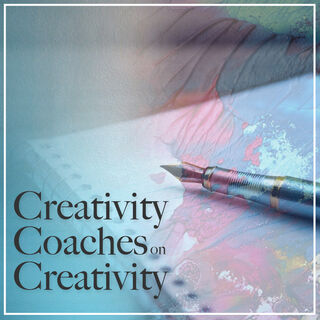
Can you write a novel, paint a painting, or invent a new tech solution if you aren’t open to creative ideas at those times when you aren’t sitting down to write that novel, paint that painting, or invent that solution?
Is creativity something that you turn on and off like a spigot? Or is it an orientation toward life? Are you likely to be blessed with creative ideas if you aren’t open to those ideas all the time? Here’s how professional singer and creativity coach Elena Greco explains the difference between “the creative act” and “living a creative life.”
Elena writes:
Do you want to be more creative? Have you been wanting forever to write a book, or long to paint, or would love to get back to playing an instrument, but can't see how to make the time to fit it in with your challenging career ? Or have you taken a survival job to support you as a creative artist, but now can’t seem to find the time to be creative?
The great news is this: You don’t have to find time in order to be creative. Because being creative has nothing to do with time. You don’t do creativity; you live creativity!
Creativity truly is a way of life, not an activity or a collection of traits. It’s not something to be relegated to certain days or times, comprising only a small portion of our waking hours. It’s about approaching everything in life creatively.
Leonardo da Vinci’s pithy quote says it all: “Never be without your little pad.” He was speaking to his art students, encouraging them to remain artists even while outside the studio, being prepared to capture the sketch of a moment that struck them in their travels through life or to record an idea that occurred to them while walking. He knew that creativity was a way of life, not a time-limited activity.
I am never not creative. I never “turn off” the flow. And as Leonardo admonished, I’m never unprepared for creative ideas which arise. When an idea occurs to me, I use a simple dictation app to record it. I open it, hit the mic button, and speak into my phone, and it transcribes my speech into text for me and automatically saves. I use my phone’s camera app to shoot spontaneous photos and videos. Being creative is easier nowadays!
Being creative means allowing your creativity to always be “on,” rather than relegating it to certain times or days. I am the same creative walking down the street as I am when I’m singing. I’m the same creative taking my morning shower as I am when I’m writing a blog post on my laptop.
In fact, some of my best ideas come to me when I’m in the shower! I leave my phone just outside the shower so that the minute I dry off I can record at the press of a button the ideas that arose in the steam. And creative ideas never fail to flow, prompted by fresh air and beautiful vistas, when I’m walking the trails of Central Park or sitting on a bench there. I always have my phone with me there to take notes and pictures. Never waste an idea!
When I lie down to go to sleep, I envision my next day and ask myself a question related to one of my creative projects, encouraging my mind to present me with a creative solution when I awake. Creativity happens even when you’re asleep! I have a notepad next to me when I sleep so that I don’t lose an idea that presents itself to me when I’m still half asleep.
Being creative means that you look at things with a creative eye, not just when you’re in the art studio painting, or on stage performing, or at your desk writing, or at your job thinking of solutions to a problem, but at every moment of your life.
Once you “turn on” creativity and choose it as your default setting, you’ll begin to notice when your creative ideas flow best. Is it in the shower, in nature, while driving, watching television, performing a certain job function, sitting in meetings, or on your favorite walking trail? Then make sure that you always have simple and easy-to-use tools at hand that accommodate your unique style at those times to capture ideas when they arise. Never miss an opportunity to be creative!
We can choose to live our lives as creative beings. Living life creatively relieves the pressure of having to “turn on” creativity only at the moment you start a rehearsal or begin your writing session. The stream is already flowing! Let it always be flowing.
Elena Greco is a professional singer, writer, and coach.

Eric Maisel, Ph.D. , is the author of more than 50 books, among them Redesign Your Mind.
- Find a Therapist
- Find a Treatment Center
- Find a Psychiatrist
- Find a Support Group
- Find Online Therapy
- United States
- Brooklyn, NY
- Chicago, IL
- Houston, TX
- Los Angeles, CA
- New York, NY
- Portland, OR
- San Diego, CA
- San Francisco, CA
- Seattle, WA
- Washington, DC
- Asperger's
- Bipolar Disorder
- Chronic Pain
- Eating Disorders
- Passive Aggression
- Personality
- Goal Setting
- Positive Psychology
- Stopping Smoking
- Low Sexual Desire
- Relationships
- Child Development
- Self Tests NEW
- Therapy Center
- Diagnosis Dictionary
- Types of Therapy

At any moment, someone’s aggravating behavior or our own bad luck can set us off on an emotional spiral that threatens to derail our entire day. Here’s how we can face our triggers with less reactivity so that we can get on with our lives.
- Emotional Intelligence
- Gaslighting
- Affective Forecasting
- Neuroscience
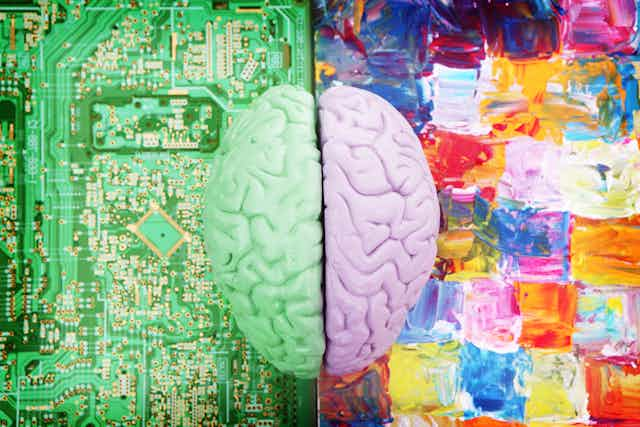
Creativity is a human quality that exists in every single one of us
Reasercher for Durham Commission on Creativity, Durham University
Head of Department in the School of Education, Durham University
Disclosure statement
The authors do not work for, consult, own shares in or receive funding from any company or organisation that would benefit from this article, and have disclosed no relevant affiliations beyond their academic appointment.
Durham University provides funding as a founding partner of The Conversation UK.
View all partners
When you think about creativity, it might be highly creative people like Mozart, da Vinci or Einstein who spring to mind. They were all considered to be “geniuses” for their somewhat unique talents that led to global innovation in their fields. Their type of creativity is what’s known as “ Big C creativity ” (or historical) and is not very common in everyday life. Not all of us can create works of art or music or scientific theories that are new to the world.
But while we can’t all be Mozart, da Vinci or Einstein, many people do enjoy creative activity – through hobbies such as water colour painting or playing the piano. And these types of pursuits are often what people think of when asked what being creative looks like. Our finished pieces may not be comparable with the likes of the great masters, but often the process is therapeutic and the end result can be aesthetically pleasing.
On top of hobbies and interests, we all possess creative attributes that can help as we solve life’s problems and make decisions. It is this type of creativity that enables us to plan different routes to get to the same destination, or how to fit in a trip to the supermarket when our schedule looks full.
It might not sound very creative, but this aspect of creativity relies on our ability to consider options and assess their suitability, as well as how to make decisions based on personal prior experience or what we have learnt formally or informally. These examples are known as “ small c creativity ” or “personal everyday creativity”.
Creative outcomes
While Big C creativity is valued and celebrated, it is often small c creativity that has allowed humans to flourish over thousands of years. It sets us apart from other animals and it is also the type of creativity which can be fostered through our education system and beyond into the workplace.
Traditionally, research tells us that creativity has been largely associated with the arts. Our previous research has shown that teachers are often able to give examples of creative activity in arts subjects, but find it harder to do so when asked to describe creativity in subjects such as science.
But there is a growing realisation that opportunities to be creative are found across a broader range of subjects. For instance, engineering provides opportunities to be creative through problem solving, and history gives the opportunity to think creatively about why events happened, and what motivated those involved.
Research has shown that training teachers to ask particular types of questions can be one way to help support creativity across the curriculum. This is because generating solutions to problems and explanations are creative processes, and these are vital if children are to have a “ complete education ”.
Our research also shows how it can be more helpful to talk about “thinking creatively” rather than “creativity”. This is because people tend to see thinking creatively as independence of thought and a willingness to take risks and seek new perspectives. It is also seen as a way to perceive new relationships, make new connections, and generate new ideas.
Moving creativity forward
The Durham Creativity Commission is a collaboration between Arts Council England and Durham University that aims to identify ways in which creativity, and specifically creative thinking, can play a larger part in our lives.
We are working alongside people in education, as well as businesses and arts and science communities, collecting their views on creativity and creative thinking. We will also be looking across these groups to determine whether or not there is a relationship between creativity and mobility, creativity and identity as well as creativity and well-being. We hope to be able to show that thinking creatively can not only be encouraged and furthered in a variety of contexts, but can also lead to positive outcomes on a personal, social and economic level.

In a rapidly changing world, creativity is important for people and society on many levels – it can help to generate personal satisfaction and be important for economic development. This is why creative thinking must be a key priority in educational environments.
In the same way, creativity must also be recognised and encouraged in the workplace. Because, after all, it’s creative thinking that leads to problem solving and innovation in a range of areas.
- Teaching creativity
- Global creativity index
- Play and creativity

Compliance Lead

Lecturer / Senior Lecturer - Marketing

Assistant Editor - 1 year cadetship

Executive Dean, Faculty of Health

Lecturer/Senior Lecturer, Earth System Science (School of Science)
Greater Good Science Center • Magazine • In Action • In Education
Doing Something Creative Can Boost Your Well-Being
Many people consider creativity the realm of the tortured soul. Think of Sylvia Plath, Kurt Cobain, or Vincent Van Gogh. Though there is no doubt that Plath, Cobain, and Van Gogh created works of great art, science suggests that they may be more the exception than the rule.
In fact, many studies have found that, while suffering mental illness can sometimes coincide with creating enduring art , creativity in general is more associated with positive emotion and well-being. For example, researchers have found that people report being happy and energized when they are engaged in everyday creative endeavors, and that being in a positive mood goes hand in hand with creative thinking .
But while these studies and others suggest a link between positive emotion and everyday creativity, it’s still unclear which one causes the other (or if they exist in a kind of virtuous circle).

Now, a newly published study aims to set the record straight.
Tamlin Conner, a researcher at the University of Otago in New Zealand, and two American researchers analyzed surveys from over 650 young adults who had filled out daily online diaries for 13 days. Among other things, the questions asked how much time they’d spent in creative endeavors each day, and about their well-being: their levels of positive emotion, negative emotion, and what the researchers called “flourishing”—an overall sense of meaning, purpose, engagement, and social connection in their lives.
To tease out what causes what, the researchers compared measures of creativity on one day to measures of well-being on the next day, and vice versa.
Results showed that people who were engaged in more creative activities than usual on one day reported increased positive emotion and flourishing the next day, while negative emotions didn’t change. However, the reverse effect did not seem to occur: People who experienced higher positive emotions on day one weren’t more involved in creative activities on day two, suggesting that everyday creativity leads to more well-being rather than the other way around.
These results surprised Conner, who didn’t think the findings would be so definitive.
“Research often yields complex, murky, or weak findings,” she says. “But these patterns were strong and straightforward: Doing creative things today predicts improvements in well-being tomorrow. Full stop.”
Still, she and her colleagues wondered why they got these results. Could it be that creative activity that we start on one day—let’s say, a crafting project—continues on the next day, and that’s why well-being goes up on day two? That would weaken the evidence that creativity has lasting effects on well-being.
Even after controlling for this possibility in their analyses, though, the researchers found that people who were more creative on one day still experienced more flourishing and positive emotions like energy, enthusiasm, and excitement the next day (though not other positive emotions, like cheerfulness). This led Conner to conclude that engaging in small daily acts of creativity may influence overall well-being rather than simply making us feel good in the moment.
But can everyone reap these benefits? Certain personality traits have been linked to creativity in the past , such as openness to experience. Yet, when Conner and her colleagues ran the analyses, they found that the benefits of engaging in creativity were similar across different personality types.
More on Creativity
Explore how creativity works .
Discover ten habits of highly creative people .
Learn five tips for reaching your creative potential .
Explore seven ways to foster creativity in your kids .
“We were actually pleased that personality made no difference in the link between creativity and well-being,” she said. “This suggests that everyone and anyone can benefit from introducing creativity into their daily lives.”
Of course, the study has limitations—most notably, that it relies on participants’ own reports of their experiences. We don’t really know how creative people actually were, at least not by any outward measure. However, it’s clear that when people think they’ve been creative, they experience more positive emotion and flourishing.
Conner believes her findings suggest that people should incorporate more creativity into their week—perhaps learn to knit, take up cooking, sing in a group, paint, or play music. She also suggests tapping into creativity at work, by trying to come up with novel solutions to problems or writing creatively.
“We can add creativity to the list of ‘actionable things’ people can do to take charge of their well-being,” she says.
About the Author

Jill Suttie
Jill Suttie, Psy.D. , is Greater Good ’s former book review editor and now serves as a staff writer and contributing editor for the magazine. She received her doctorate of psychology from the University of San Francisco in 1998 and was a psychologist in private practice before coming to Greater Good .
You May Also Enjoy

The Birth of the Arts

Why Your Creative Ideas Get Ignored
How nature can make you kinder, happier, and more creative.

How to Combat America’s Creativity Crisis
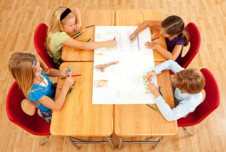
How to Foster Group Creativity
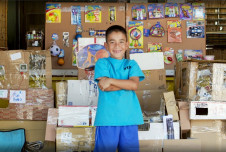
Lessons in Creativity from Caine’s Arcade
Why Creativity is Important
By: Author Paul Jenkins
Posted on Published: December 20, 2021 - Last updated: September 13, 2022
Categories Creativity , Inspiration
Most people would agree that creativity is important. Perhaps the most important soft skill of the 21st century. After all, it enables us to develop new ideas and solve problems innovatively. But exactly why is creativity important? Thinkers have been asking this question for centuries, and there’s no simple answer. Some say that creativity is a fundamental human trait that sets us apart from other animals. Others claim it’s essential for productivity and innovation in the workplace. And still, others see creativity as a form of self-expression or art. However you see it, there’s no doubt that creativity is an important part of our lives. So let’s take a closer look at why creativity is important.
Creativity Allows Us to Express Our Feelings
Creativity is an important part of our lives because, without creativity, we wouldn’t have the things that bring us so much happiness and satisfaction. Creativity is one reason things like art, music, dance, and film exist. Creativity helps us express our feelings and ideas about all kinds of things. It also allows us to share our ideas with other people.
When people express their feelings through art, music, or stories, they can share their thoughts and emotions with other people. When you’re creative, finding good solutions and developing new ideas is ea sier . Creative expression is a tool you can use to solve problems and situations.
You don’t have to be a creative genius to be a creative person, by the way!
A creative idea can sometimes help you overcome a challenge you may have been facing for a long time; remember – the time to solve a problem need not reflect the time you faced the problem!
Creativity Helps You Solve Problems
In our everyday life, we encounter all kinds of problems. These problems often make us unhappy or frustrated. We try our best to solve these problems, but it’s not always easy. Creativity can help us solve these problems – which might be highly complex – by helping us find an innovative solution. A creative solution.
When we look at a problem in a new way, we can sometimes find a solution we hadn’t thought of before. One of the most important aspects of creative thinking is divergent thinking, which means we’ve multiple solutions for solving a problem. It’s less logical and linear and more associative and lateral.
Creativity involves breaking out of established patterns in order to look at things in a different way. Edward de Bono
When you’re creative, your mind is in the right frame, and you allow yourself to release old patterns, you can come up with something amazing.
Creative people can look at a problem from many angles, solve it, and still have something left for the next problem. Creative people don’t always find solutions to problems; sometimes, they just find ways around them. They can see things in a new way that others cannot.
Creative problem-solving helps you come up with new and innovative ideas. In business, by using and developing your creativity, you can solve problems, be more innovative, develop better products and services, and engage in better decision-making. In life, creativity can help you deal with everyday and long-term problems and challenges.
Creativity allows us to overcome biases and prejudices that sometimes get in the way when we try to solve a problem or find a new idea.
Creativity Makes You Happier and More Content
In some ways, this contradicts the hackneyed notion of the long-suffering artist. But in reality, doing something creative daily can make you happier and more productive.
Sometimes you’ve got to let everything go purge yourself. If you are unhappy with anything… whatever is bringing you down, get rid of it. Because you’ll find that when you’re free, your true creativity, your true self comes out. Tina Turner
Creativity is a muscle that gets stronger with use. The more you exercise it, the easier it’ll be for you to develop new ideas. Creative people are often thought of as mysterious, but there’s nothing magical about their ability to develop new ideas. They’re simply better trained in the art of creativity than others.
For example, drawing or painting daily can make your artistic interests an important part of your life. Many of us enjoy spending time in creative environments. This can be anything from visiting an art gallery to seeing a play. Feeling connected to other people who participate in creative activities is also normal.
You may feel part of something if you both watch the same show on TV or attend a music festival. Crafting, making music, and writing poetry all help make you more alert and focused. Creativity is important to your well-being. It’s one of the most crucial aspects of our humanity. And if you have a job where you can be creative, you’re likely to feel happier and more motivated.
Creativity is an important element of mental health. It’s an important factor in human development and improvement.
Creativity Helps Survive in Troubled Times
Creativity is not just important in terms of personal creativity or business creativity.
Our world is facing many challenges, some of which are unprecedented. Pandemic disease, climate change, and resource scarcity are challenges growing in magnitude and intensity. Creativity helps us improve our chances of survival.
When creativity melds together with global issues, believe you can bring the world together. Virgil Abloh
In the past, our ancestors were driven by the need to hunt, gather, and survive. Over the millennia, our creativity has helped us evolve from apes to modern humans. As a species, we’re programmed to be creative. When it comes to survival, creativity and flexible thinking are very important.
Creative people know they’ve skills they can rely on when the going gets tough. Creative leaders feel more confident because they know how to think outside the box and find a solution to a difficult problem.
Creativity helps us adapt to changing circumstances and gives us a better chance of survival. It’s worth noting that creativity often thrives under constraints and in difficult situations. Somehow we can be inspired to create something when we feel limited or constrained. Through creative thinking, new solutions emerge to solve problems. We, humans, are inventive and capable of finding solutions to almost any problem.
Creativity Boosts Your Self-Confidence
When you’re creative, you tend to have greater self-confidence. This is because you learn more about who you are and how you relate to the world around you. The more you know about yourself, the better you can handle life’s challenges.
For example, if you’ve been told that you’ve some talent for poetry, it can help you feel more confident. Especially when others praise your work.
The creative activity processes help us better understand ourselves, thus boosting our self-esteem. Creativity helps us gain fresh ideas about ourselves and understand our place in the world. When we’re engaged in a creative process , we better understand who we’re, what we value, and what we want to do with our lives. We feel more connected to the people and things around us and are, therefore, more self-aware.
This confidence aspect can be especially important in professional development – not only in the creative professions.
Creativity Can Help You Live Longer
Scientists have found that creativity uses a variety of neural networks in the brain, helping us stay healthy and active as we age.
We all have a spectrum of skills that fall under the term “creativity” – everything from designing a new chair to writing a novel or making music can be considered creative thinking. By reducing stress, anxiety, and negative emotions, creativity keeps us young and helps us live longer healthier lives. This is especially important as we face new challenges and problems as we age. The brain changes as we age, and our mental capacity declines, but a creative outlet like painting or music can help slow some changes.
It’s hard to understate how important – or beneficial – creativity and mental plasticity are as we age.
Creativity Can Improve Your Brain
Creative activities like writing or painting engage different parts of your brain. This improves your creative abilities and your ability to focus and think. That’s because your brain keeps working and learning – and that’s what you need to stay at the top of your field.
Creative people – or rather, people who let their creativity run wild – see things differently than most people. They notice things that others overlook. When you surround yourself with these people, you begin to understand their way of thinking, making it much easier for you to be inspired by them.
Creative people are more willing:
- They try new things, even if they seem a little silly.
- Take risks because they’re not afraid to fail.
- They explain complicated ideas in a way that makes sense to others, even if those explanations are a little awkward initially.
- They’re open-minded because they don’t let their assumptions influence what they see, hear, and learn.
- They always seek to improve their creative skill in one area or another
Creative people often have a large social network and many contacts to help them develop new ideas and solve problems. Creative people are good at building relationships, leading to opportunities that mightn’t otherwise exist.
The most important thing about interacting with creative people is inspiring them to think outside the box and look at things differently. Being around creative people will challenge your thinking, spark your imagination, and help you reach the next level in your business or profession.
Creative Activities Are Important for Children
Although creativity is important throughout life, it’s especially important for children. This is because their brains are still developing and eager to draw from the world around them. Ultimately, their creativity will help them develop into better people.
That is why it is crucial to encourage and foster the creative thinking skill of a child.
Creativity Gets Your Mind Going
I spend a lot of time thinking about and experimenting with thought development techniques. Although much of this work is fact-based and goal-oriented, I find that my mind thinks very differently when I’m doing creative work – it’s as if all the cogs in my brain are coordinating in complex ways.
I love being a creative thinker.
When I let it flow, I get a great feeling – almost like the tingle when you’ve solved the mystery of a puzzle. I especially find this in creative writing and photography.
The thoughts are faster, more complicated, more detailed, and more organized. I can think faster, make more connections between ideas and concepts, and come up with some pretty crazy ideas that I would never have thought of if I’d thought logically.
For example, when I sit down to draft a novel or put together a short film with music – things like this can trigger my creative potential and get my mind going.
Creativity isn’t just about art, it’s about being resourceful and finding new solutions to your problems. It gets your mind going, and you feel more able to handle whatever comes your way. It also encourages you to look at things from a different perspective so you can find solutions that others may overlook.
A creative mind is an active mind.
Creativity Helps Us Absorb Knowledge
Creative activities help us connect the information we seek or encounter, thus helping us learn new things; this is another important way creativity helps us.
“Creativity is the ability to connect things,” and this applies not only to the ability to connect dots but also to the ability to connect one idea with another.
Creativity makes it fun for us to learn new things, and it can help us absorb information in a way that we can use later in life – whether we’re trying to learn new skills, pass an exam, be more productive at work, or succeed in some other capacity.
The best way to use creativity as a learning tool is to brainstorm. Brainstorming allows us to open our minds by considering all possibilities and making connections between those possibilities. In particular, brainstorming combined with mind mapping can help us make various connections between ideas and store them all in one place so we can refer back to them later. This way, we can take new knowledge with us wherever we go, anchoring the new knowledge in our minds.
It’s also not about having a better memory or simply being smarter. Rather, it’s about how you process information and creatively develop connections and insights others don’t think of.
That’s why I regard creative play with knowledge as a creative skill.
Helps Us Celebrate Successes
Keeping things in perspective is an important skill. Creativity is a great motivation to keep you focused on what you want to accomplish. It helps you feel proud of your accomplishments and feel good about yourself. Creativity challenges us to celebrate things we mightn’t otherwise accomplish (because with art, you’ve created something uniquely yours).
Creativity challenges us to celebrate our accomplishments in ways we mightn’t otherwise.
Creativity helps us save thoughts from extinction
Creativity helps us bring ideas to life. Sometimes our thoughts simply die out because others don’t support us. Or because we don’t want them to. Creativity reminds us to keep our thoughts alive and to make them bloom.
We have these thoughts all the time, but we don’t act on them or they leave our minds as quickly as they came. Creativity helps us keep thoughts from dying out by making something new and interesting out of them!

Creativity Helps Us to Become More Empathetic
Creativity can also help us become more empathetic. Every time we try something new, we learn to be more open and tolerant of other ideas and ways of doing things.
Creativity helps us become more empathetic by encouraging us to imagine what other people think and consider their needs. Creativity not only helps us understand others, but it can also help us develop better self-control. New experiences allow us to try new ways of thinking and behaving, leading to better control of our emotions.
When you do something new, you don’t have preconceived notions about how it’ll turn out. Therefore, you’re willing to try different approaches and experiment with different options until you find one that works.
For example, if you want your kids to be less selfish and collaborate with their friends or classmates, you can encourage them to use their creativity.
Creativity Helps You Learn About Yourself
Creativity helps you learn about yourself. You can see what you’re thinking when you express your ideas through art, writing, innovation, or music. In a subconscious way. Sometimes that’s a good thing, sometimes a bad thing, but either way, it allows you to understand yourself better.
Telling your thoughts to someone else can give you even more insight. When you say something out loud, it forces you to think about it differently. This can lead to new ideas or new insights into your original idea.
You can develop your personality and feelings when you work on becoming more creative. You can also develop as a person and get to know your type better. You’ll also realize which things make you feel good and which make you feel bad.
Creativity Expands Your Horizons
Creativity is a skill that’s often overlooked. This can be a mistake, especially in startups and small businesses. The ability to come up with original ideas, think outside the box, and solve problems with limited resources is important to running a successful business.
Creativity helps you see the big picture, connect the dots between ideas, and develop new ideas to keep your business or activity growing.
In his book Creativity, Inc, Ed Catmull describes how creativity is important to running a company like Pixar. It helps you see what others don’t and become aware of how others see your creative decisions. If you’re open-minded and willing to take risks, you’ll find creativity helps you succeed in all aspects of life, including business.
Creativity Helps Unite Us
Creativity brings people together and helps us learn new things about ourselves and other people.
Creativity is the key to a healthy community. The ability to think outside the box and do things that have never been done before helps connect people and opens them up to new possibilities.
Information is constantly being shared, but without creativity, it’s just facts and figures. Creativity makes information more interesting and brings people closer together.
By sharing creative activities, we understand each other better and communicate better. We can inspire each other to pursue ideas that have never been tried before, and sometimes that leads to innovation in very different ways. Our imaginations help people interact and get to know each other better.
Creativity and Motivation
Creativity helps you keep your motivation high and stay on task. Creativity can help you stay on task in your daily activities and motivate you to do more. If you’re always looking for new and innovative ways to accomplish the same tasks, you’ll be more willing to pursue your goals.
Motivation is about rewarding yourself with small rewards for useful results, and you can use your creativity to give yourself small rewards. You’ll feel refreshed afterward and ready to tackle the project again.
Creative thinking has the power to turn everyday situations into interesting ones. It helps us get out of routines and look at situations differently . The more creative we’re, the more flexible our thinking and actions become .
Trying something new, like painting a picture, writing a poem, or learning a new language, can help you stay focused and motivated. The creative juices flow when you actively use your imagination or artistic skills. You feel motivated and engaged, which ultimately keeps you focused.
These activities are a great way to keep your mind sharp and have fun simultaneously.
Creative activities can help you improve your memory because it helps you focus on the task at hand. This way, you can clear your mind of stress, worries, and anxiety.
Do something creative every day. Find small ways to incorporate creativity into your daily routine. For example, when doing a crossword puzzle, you can look for words with multiple meanings and develop ideas about those double meanings.
Create an environment that supports your creativity. An awkward workspace or environment can inhibit creativity, so make sure your workspace is clean and well-lit. Also, make sure you’re not constantly distracted by text messages, emails, or other interruptions, so put your phone on silent and close any other apps that display notifications.
- Skip to primary navigation
- Skip to main content
- Skip to primary sidebar
Get your free SIMPLICITY GUIDE: 25 Ways To Simplify Your Life in Ten Minutes or Less Click here to download.
be more withless
Simplify your life. Declutter your mind. Connect with your heart.
Why It’s Important to Be Creative
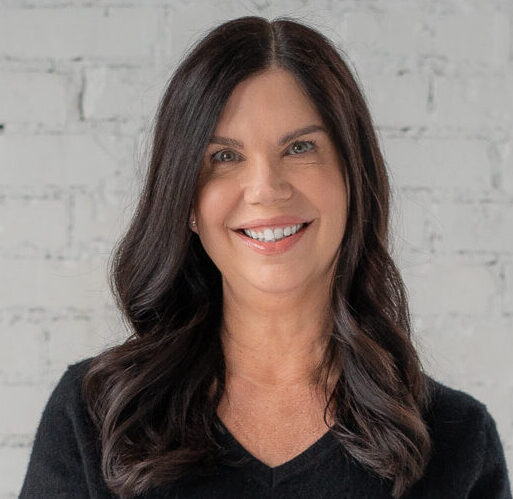
I’m often asked, “What’s next?” People want to know how I fill my time now that I’ve simplified my life, gotten rid of most of my stuff, and opted out of the corporate grind. They also want to know how they will spend their time.
If you are wondering what your life might look like on the other side of a hurried, jam-packed schedule or worry that you won’t know what you’ll do with extra time and space, you are not alone.
It looks different for everyone and the good news is that you don’t have to figure it all out in advance. That time and space you create will provide answers. You’ll finally be able to hear yourself think and discover what you like to do and really want to do.
After being on autopilot for decades, the freedom of deciding how I wanted to spend my day was almost paralyzing, but I eased in. I am so grateful to be able to design the majority of my time to engage thoughtfully in my work and do things that make me healthier and happier every day.
3 important reasons to be more creative …
- Creativity predicts a longer life. In this Scientific American article , “researchers found that only creativity—not intelligence or overall openness—decreased mortality risk. One possible reason creativity is protective of health is because it draws on a variety of neural networks within the brain.” James Clear cites studies and research that demonstrate creating art decreases negative emotions, reduces stress and anxiety, and improved medical outcomes. Not only can being creative help you live longer, but it can improve your quality of health and life too.
- Solve problems. Being creative helps you become a better problem solver in all areas of your life and work. Instead of coming from a linear, logical approach, your creative side can approach a situation from all angles. Creativity helps you see things differently and better deal with uncertainty. Studies show that creative people are better able to live with uncertainty because they can adapt their thinking to allow for the flow of the unknown.
- Develop confidence. Being creative comes with many ups and downs and a high risk of failure. You have to be vulnerable to share your art, and willing to take the risk that what you create may never see the light of the day. Engaging in the creative process is a great confidence builder, because you discover that failure is part of the process. Once we see failure as something that is survivable, and something that helps us grow and that it makes our work better, we can release the fear and try new things even at the risk of failing.
I brought a small bag of paints and brushes when we moved last year, put them in a drawer, and told myself that if they were still in the drawer in a year, I would throw them out. I’m so glad I used them before my deadline arrived. I didn’t create a masterpiece and that might not look exactly like Henry, but the joy I felt putting brush to paper reminded me why making time for it is so important.
The creative process invites everyone to be creative. Art is not just for “creative-types” and even if you don’t think you are artistically inclined, you’ll be surprised at your capacity to create great work. If you haven’t created anything lately, keep it simple and fun. Write your next poem, or draw your next picture without judgement or fear and see what happens.
I didn’t have the right brushes to paint the picture above, but I used what I had including a q-tips and a tiny screwdriver. Don’t worry about doing it wrong. Don’t wait until you know it all or have it all. Just ease in and and take advantage of everything creativity has to offer.
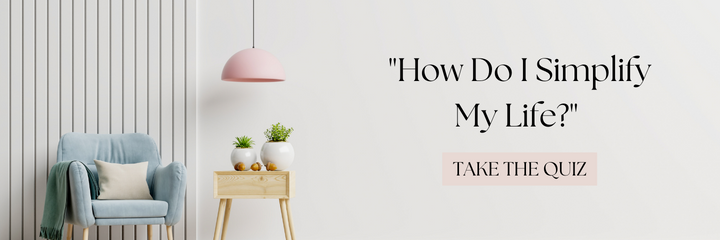
+61 8 6222 7909

Looking to Master Your Life? Yes, Send me the 'The Four Pillars of Life Mastery' FREE Download
- Name This field is for validation purposes and should be left unchanged.
What is creativity and why is it important in everyday life?
Did you know that creativity is one of the most important qualities that a person can have.
Many of us don’t. Many of us ignore the aspects of our creativity, what it can offer and why it’s important within our everyday lives.
It might surprise you to know that human beings are essentially born to be creative in order to help us find innovative ways to negotiate life. We however, are taught to work hard, study hard and fit into ‘society’, but who encourages us to use our creativity to grow?
By applying creativity to your everyday life, you can make life infinitely more interesting and fulfilling.
What is creativity?
First things first. What actually is creativity?
Creativity is a process involving the generation of new ideas or concepts, new associations between existing ideas or concepts, and their substantiation into a product that has novelty and originality. From a scientific point of view, the products of creative thought (sometimes referred to as divergent thought) are usually considered to have both “originality” and “appropriateness.” An alternative, more everyday conception of creativity is that it is simply the act of making something new.
Although intuitively a simple phenomenon, creativity is in fact quite complex.
Even though we mostly think of creativity as the making of something, the root meaning of the word actually means ‘to grow’.
Yes, the etymological root of the word in English and most other European languages comes from the Latin creatus, which literally means “to have grown.”
Why is it important in everyday life?
We know what creativity is, but why is it important in everyday life?
The truth is, when we are creative, we feel as if the world and all that is in it is vibrantly alive! With creativity in your everyday life, you free your mind up to think in new and exciting ways.
The most creative people find ways around obstacles, because they see them not as roadblocks but as opportunities. Being creative, expands our perceptions and along with expanded perceptions come new ways of problem solving.
Creativity is about living life as a journey into seeing and communicating the extra-ordinariness of the simplest, most every day acts. It is also a way of living life that embraces originality and makes unique connections between seemingly disparate ideas.
Essentially, creativity is a tool that can make work fun, life easier, save you from boredom, and help you to feel more fulfilled. Creativity will challenge your mind, enhance your brain, and give you the ability to think outside of the box.
The impact of creativity can be seen in our physical body and keeps our brain healthy too, which is one of the most important aspects of ageless living. Not only can creativity help us live longer, it can improve our quality of health and life too.
So, why wouldn’t you want to add some creativity to your everyday life?
How can you be more creative?
Want to add some creativity to your life, but not quite sure how?
Simply start by spending more time creating! Here are some examples:
- Try your hand at arts and crafts
- Learn to look at situations differently
- Cook new recipes or create your very own
- Challenge your thoughts
- Redecorate a room in your home
- Don’t be afraid to be original
- Take more photos of things and places, not people
- Find a problem to solve
- Take up painting or pottery
- Talk to someone with a difference of opinion
- Write a story, song lyrics or a poem
So, you see, by applying creative thinking to your everyday life, you really can make life infinitely more interesting and fulfilling.
I encourage you to use your creativity to grow. Even if you don’t think you have a creative bone in your body…You do, you just need to wake it up!
Ready to get creative?
Or perhaps you want a little more help getting started?
© 2019 Conrad Francis. All rights reserved.
Why is Creativity Important and What Does it Contribute?

If you’ve landed on this page, you may also be interested in the SPARK Youth Arts Festival , taking place from February 20th – 24th!
Following on from last week’s blog, this second reflection developed by youth workers and artists in Cork as part of the Creativity and Change programme is on the role of creativity in contributing to the competences, values, attitudes and characteristics we want to nurture in ourselves and others to grow as global citizens.
The reflections were not just theory. Thirty people immersed themselves in creativity, reflection and connection to each other. The following reflections emerge from this shared experience.
Why is Creativity Important What Does It Contribute?
Creativity engages the mind.
Creativity frees the mind in a way that enables a person to absorb knowledge more easily. It makes processing learning more efficient
Creativity enables alternative ways of thinking.
It unblocks old patterns or habits of thinking. It allows for non-linear thinking.
Creativity enables empathy.
Creativity connects us to ourselves.
It opens our hearts and doors to our mind. It brings us to hidden parts of ourselves. It allows recognition of uniqueness and identity. It can help draw out what is already there within – hidden talents and inner capacities can emerge. It connects us with our passions.
Creative participation nurtures a sense of togetherness.
It brings people together and can nurture skills in teamwork and cooperation.
Creativity challenges.
Creativity can connect reflection with action.
Creativity builds intercultural connections.
It connects us to different cultures and sub-cultures.
Creativity nurtures confidence.
Creativity builds confidence. When they are confident, young people are less easily influenced by others
Creativity instills curiosity.
It encourages questions.
Creative expression gives a voice.
It can help capture ideas, thoughts and visions about the world. Young people can
advocate for themselves and for others.
Creativity is participatory and interactive.
When engaging with creativity, young people are not passively listening/absorbing, but are exploring, discovering and communicating. It can support young people to be more active and present as members of society.
Creativity stimulates and motivates.
Creativity brings us beyond words.
It allows exploration and communication beyond the limitation of words.
Creativity is fun and joyful and surprising.
Creativity keeps the mind active.
Creativity engages different learning styles.
Creative methods enable engagement through a variety of learning styles. Everyone learns and engages differently.
Creativity allows us to view and solve problems more openly and with innovation.
Creativity opens the mind.
A society that has lost touch with its creative side is an imprisoned society, in that generations of people may be closed minded. It broadens our perspectives and can help us overcome prejudices.
Creativity inspires collective thinking.
Creativity nurtures ideas.
Creativity supports resilience.
You can access the two publications developed during the week together at
Creativity. Resilience and Global Citizenship, Explorations, Reflections and Recommendations.
Creativity Resilience and Global Citizenship- Toolkit
If you are interested in these themes and topics there are several ways you can get involved in the Creativity and Change programme.
-An Accredited Level 8 special purpose award that involved 16 days of experiential learning workshops
-Link in with our one day training programme that take place around the country.
-Look out for new editions of our international creative youth worker training programmes
-Access our resources on our website
www.creativityandchange.info
Jessica Carson
Privacy overview.
Carmel Walsh is the Youth Work Services Manager at Belong To, responsible for strategic planning and delivery of LGBTQ+ Youth Work in Dublin, as well as overseeing the Family Support Service and the National Network of LGBTQ+ youth groups in Ireland. With a strong background in youth work and European funding, Carmel brings extensive expertise in strategic implementation, research initiatives, and cooperation projects to enhance the quality of youth work for LGBTQ+ young people.
Michael Power is CEO of Involve Youth and Community Service, having worked within the organisation since 2008 where he held a senior role in the organisations national publication, Travellers’ Voice Magazine. In Michael’s time as Manager of the Travellers’ Voice CSP, he has brought to fruition various campaigns which highlighted Travellers in education and various employment settings in order to dispel the often negative stereotypes associated with the community. His most recent education campaign, “Degrees Ahead”, highlighted Travellers in third level education and the various paths to continued and adult education. He has also ensured the publication has become a platform for lesser heard voices within the community, highlighting individual’s achieving above and beyond the expectations imposed on them.
In Michael’s time as CEO he has been responsible for the development of Involves latest strategic plan which aims to improve the work of the organisation in the areas of Youth Mental Health and Employment, as well as putting in place structures to improve the collaborative work of the organisation to highlight and challenge educational disadvantages for the Traveller community.
Michael is a member of the Traveller community, and brings first-hand experience of the benefits of youth work in influencing future development. Throughout his career with Involve, Michael has developed extensive experience in the youth sector which brings together his love of working with young people and his passion for the rights of his community and marginalised people.
Dear [constituency] TDs, We are constituents from [Constituency] who are calling on you to support young people in Budget 2024 by investing €9.4 million in young people and youth work. It is a hard time for young people. COVID-19 impacted their mental health and social connections, and now, the cost-of-living crisis means many are struggling financially. Youth work organisations say that deprivation among young people they work with is on the rise, and the need for youth services is growing dramatically as young people and their communities feel the effects of the cost-of-living crisis. Youth workers are often a lifeline for young people, particularly for those who have the least. The wide range of activities provided by youth organisations support young people in their personal and social development, positive mental health, physical wellbeing, job skills and much more. The rising cost of living is also placing a huge strain on youth work organisations themselves. A recent survey by the National Youth Council of Ireland revealed that nearly 3 in 5 organisations struggle to deliver vital youth work services because of inflation. The Government must provide the necessary resources for these organisations to meet the growing needs of young people in [Constituency], and to provide an Ireland where young people can live, grow, and flourish. That is why we are supporting the National Youth Council of Ireland in calling on the Government to invest an additional €9.4m in youth work services in Budget 2024, to provide more supports and activities for young people and meet the needs of our growing youth population. The NYCI and its members across the country believe this increase is needed to help ensure the sustainability of the sector, and deal with current challenges facing many services. We request that you act on this call and use whatever avenues available to you to ensure that we see a Budget 2024 that invests in our young people. Your constituents, [Your names]
I have over 30 years experience in the voluntary Youth Work and Youth Sector in Ireland.
I am currently the Volunteer Development Manager with Forόige. In this role I am responsible for key tasks such as managing, developing and supporting the involvement of thousands of Forόige volunteers in all aspects of the organisation. I also lead on the design, dissemination and implementation of best practice standards in volunteer recruitment, management and retention policies and procedures. I am a member of Foróige’s child safeguarding and protection internal working group. I also was a member of the Ministerial advisory group for development of the National Volunteering Strategy, launched in late 2020, and I am currently on the communications working group for the role out of the strategy.
I believe that youth work’s essential role in young people’s lives has been made all the more obvious as a result of the pandemic. The restrictions caused by the need to protect vulnerable people in particular from COVID 19, were imposed on young people without them having any say in the matter. They became takes of others rules and priorities, without input or choice. This, while necessary at the time, is the exact opposite of what we want for young people. We want them to be heard, to be helped to develop their own views and values (not just absorb ours). We want them to be involved in decisions that impact on them and to feel they have an influence, with which comes connection to society and hope for the future. The National Youth Council of Ireland plays a huge role in representing the shared interests of the organisations who are its members. These organisations, large and small, bring a range of youth work approaches arising from various traditions and a focus on particular youth needs. The diversity of organisations provides choice and opportunity for young people to pursue their own interests.
This diversity presents a challenge too, in identifying and agreeing their shared interests on which NYCI can represent, advocate and influence. This calls for a president who will listen support, facilitate. It calls for an NYCI which is effective, well governed and compliant with all relevant governance and financial, management requirements.
I believe I have the necessary skills for this role from my role in Foróige and my previous experience on the board of NYCI, including a term as its vice president. I am aware of the need to represent negotiate, assert firmly but respectfully, to act together in seeking to influence government departments and politicians. I understand the need for a strong working relationship between president and CEO.
Nicola has been involved in Girl Guiding for over 44 years and has been employed in the CGI National Office in Dublin since 2013. Nicola has also been a volunteer leader with CGI in Wexford for the last 19 years.
In her role as National Office Coordinator, Nicola works closely with the NYCI and members of other youth organisations, through the Specialist Organisations Network and represents CGI at numerous meetings. Nicola also attends meetings with the Department of Children and Youth Affairs representing the uniformed bodies of the Youth Work Electoral College.
Nicola has held voluntary positions within CGI of National Secretary and National Commissioner for Ranger Guides and was a member of the National Executive Board. Nicola continues to attend CGI Board meetings in her current role.
Before moving to Ireland, Nicola worked for the UK Government and the Environment Agency in the nuclear industry regulation division and was also a youth member and then volunteer with the Guide Association UK.
I am currently a Senior Manager with Crosscare Youth Services with over 20 years’ experience having started my youth work career in CYC in January 2000, and was part of the merger with Crosscare in 2013. I line-manage our 6 Dublin West and East Wicklow youth projects, and also have responsibility for Youth Information and Outdoor Learning in Crosscare.
I have a Bachelor of Arts in Applied Social Studies from Maynooth University, and last year I completed a masters qualification, gaining a (MSc) Master of Science in Innovation & Strategy in the Maynooth Business School. I feel there is a need to be innovative and strategic in future plans for the sector, as we seek to be sustainable and receive full cost recovery for the delivery of quality youth services.
I am currently a member of the Board of Adamstown Youth and Community Centre. This is in an area with broad cultural diversity and we are trying to develop some youth provision in this under-resourced area. We were recently approved for a new part-time youth worker and a dedicated Youth Diversion Project for Adamstown, to increase the Lucan Boundary. Greg has been a NYCI Board member for the last 3 years.
Eve is an active leader in her locality currently working with girls between the ages of 5 and 7, and previously worked with Irish Girl Guides’ older branch for 10- to 14-year-olds. Eve has previously represented Irish Girl Guides at the Erasmus+; Get Active! Human rights education among young people workshop.
In addition, Eve sat on the Membership, Equality, Diversity and Inclusion committee for Irish Girl Guides. Eve is a primary school teacher and focused her college dissertation on the impact of period poverty in schools. Eve has been a NYCI Board member since 2021.
Claire Anderson has been working with Scouting Ireland since October 2020 in the role of Communications Officer. She is an experienced journalist, marketing manager and communications expert. Claire graduated with an MA in Journalism and New Media in 2015. She is based in Cork and has worked with several high-profile businesses including the Irish Examiner. Working in marketing communications from 2017, Claire has created and implemented advertising and communications strategy for company expansion into eight new markets. She has worked closely with colleagues to build effective communication practices and systems. She has managed all content production from production to publishing and most recently developed a new central website for Scouting Ireland. Claire has over seven years of experience leading content production and successful marketing campaigns. She completed a Diploma in User Experience and User Interface Design this year. She also runs her own marketing business. Claire has been involved in dance since she was a child and is a keen supporter of the arts. She has volunteered with Cork Feminista and Husky Rescue Ireland, however, she is not actively volunteering at present. Claire lives in the countryside with her partner, dog, cats and hens. She enjoys sea swimming and hiking in her spare time as well as training for her first 10k race.
Mick Ferron is currently the Regional Youth Services Manager with Sphere 17 Regional Youth Service.
Qualifications: BA Social Science from UCD Higher Diploma in Youth and Community work from NUI Maynooth.
Sphere 17 is a community-based regional youth service covering Dublin 17 and the Kilbarrack area of North Dublin. The service operates from four different youth centres in the catchment area providing a range of different programmes, activities and support for young people 10-24 years. Sphere 17 believes all young people can achieve great things. Their mission is to support young people to be the best that they can be, and they do this in different ways for different young people, as they need it, through the varied services provided.
In addition to the UBU funded youth service activity, Sphere 17, in collaboration with local partners, also provides a youth counselling service – The Listen Project, manages the Woodale Youth Justice Project, and is the lead organisation behind Creative Places Darndale.
Prior to his 16 years in management with Sphere 17, Mick has worked in community-based youth service provision in Ballyfermot and in the eastern suburbs of Melbourne, Australia. He has also worked in the homeless sector, and in a drugs education project in Cork.
Originally from Canada, David Backhouse has been an active youth worker in Ireland since 2008. Chiefly through the YMCA, his involvement in many youth and community initiatives has brought him into partnership with Léargas, Cork City and County Councils, Irish Aid, CDYS, Youth Information, SpunOut, Comhairle ná nÓg, Foróige, Hub ná nÓg, Youth Work Ireland, CYPSC and many other local arts and community associations.
In 2016 David took up the role of Cork Regional Director for YMCA and in November 2019, began his current role as Deputy National Secretary, responsible for YMCA Ireland operations in the Republic of Ireland as well as providing support to all YMCA agencies north and south. He is passionate about Youth Participation, Creative Methodologies and the provision of high quality, well supported professional youth services to those in Ireland most in need.
Rose Marie Maughan Is the National Traveller Youth Programme Coordinator with the Irish Traveller Movement. She has been working in the Irish Traveller Movement since 2004 on a local, regional, national and international level in different capacities such as Board member, National Accommodation Officer, Membership Officer, Education Officer, Project coordinator.
She has both a lived experience of being a young Traveller in Ireland and issues facing young Traveller youth today alongside an in-depth analysis of youth work and issues facing the sector. She strongly believes in youth’s right to self-determination and meaningful participiation in finding solutions to issues affecting their lives.
In her current role as National Traveller Programme Coordinator, she is overseeing the implementation of the Irish Traveller Movement’s Traveller Youth 5yr strategy working towards giving Traveller Youth a voice in all sectors of society.
Garry McHugh is National Director of Young Irish Film Makers, Ireland’s national youth film organisation. Responsible for strategic planning, fund raising, artistic and programme development. Managing partnerships with national funding bodies such as the Arts Council, Dept. of Children & Youth Affairs, Screen Ireland and the Education & Training Board.
Since taking over the National Development of the organisation in 2014, Garry has worked with the team at YIFM to grow the capacity of YIFM programmes to work with double the number of young people over the past five years, delivering five times the number of contact hours with participants. Young Irish Film Makers now work with over 1500 young people annually across Ireland through the youth arts practice of film and animation. Demand is continuing to grow as YIFM film making and animation workshops are recognised for their ability to deliver high quality outcomes for young people from all backgrounds.
Garry is heavily involved in the programme design and delivery of informal education workshops delivering quality personal, social and creative outcomes for young people across Ireland. With a focus on film and animation workshops for secondary schools, youth development agencies and youth workers nationwide.
Before he became involved in youth development and youth arts work, Garry was a professional filmmaker, musician and enjoyed treading the boards as an actor. He believes this grounding in the creative industries led him to where he works now, with young people through youth film programmes. He has twenty five years of experience in film production, broadcast radio and informal education & training. His CV ranges from corporate communications and music video production to training and informal education programmes in film, animation and digital media production.
My experience comes from my many years within the Irish Second-Level Students Union, chiefly as president during 2020-21 where I represented student’s throughout the covid-19 pandemic, working with the Department of Education and education stakeholders as part of the State exams Advisory group to do what was best for our young people through an extremely challenging time.
My other experience across other organisations such at Spuntout.ie national action panel or partnering with other organisations here such as ICTU on young workers rights gives me the necessary experience to bring a new perspective to the governance of the NYCI.
I have been a representative of young people for the last 5 years at a local, regional national and international level – with my particular focus on youth representing and how that can be best achieved – I hope you can put your confidence in me to work as a member of the NYCI board to deliver this for you and continue the outstanding work of the NYCI.
Niamh Quinn is a Manager with Foróige. Niamh has extensive direct youth work and management experience within the youth work and non formal education sector. With Forόige since 2004, Niamh’s previous roles include Outreach Youth Officer working with young people aged 14 – 18 years most at risk; Senior Youth Officer and Acting Area Manager.
Niamh’s current role is supporting the development, roll out and delivery of CPD training and processes for the national School Completion Programme.
Niamh is the current Vice President of NYCI. Niamh is also the current Chair of the NYCI HR & Governance Sub Committee.
Niamh is a graduate of Trinity College, Dublin.
Access your One World Week Resource
- Name First Last
- Organisation (if relevant)
- Why do you need my name and email address? Our funding is conditional on monitoring usage of our resources by youth workers, educators and activists such as yourself. If you do share your details, we will forward a short feedback survey to you within six weeks. Thanks for your support with this.
- Keep me up to date! I’d like to join 5,000+ subscribers already receiving NYCI emails.
- I agree to allow NYCI to collect and store my data from this form. We will protect your personal information in accordance with our privacy policy
- Comments This field is for validation purposes and should be left unchanged.
or access resource without filling form »

What Is Creative Thinking And Why It Is Important
When learning is purposeful, creativity blossoms. When creativity blossoms, thinking emanates. When thinking emanates, knowledge is fully lit. When knowledge…

When learning is purposeful, creativity blossoms. When creativity blossoms, thinking emanates. When thinking emanates, knowledge is fully lit. When knowledge is lit, economy flourishes. – A.P.J. Abdul Kalam
How often do you take time out from your day-to-day pressures and tedious meetings to glance out of the window and dream? How often do you deviate from the mundane routine and let your imagination run wild?
Unless you break free from ‘short-term’ and ‘shortcut,’ your thinking will not deepen. Unless you set your mind free to dream and ideate, your creativity will not blossom.
So to start with, take time out to understand what is creative thinking and why is it important.
What is creative thinking?
Creativity is the ability to generate a thought or an idea that is completely new, appealing, and useful. Creative thinking is a skill that enables you to come up with original and unconventional ideas.
Creative thinking expresses itself in a multitude of ways. A graphic artist creates a brilliant logo. A lawyer discovers an out-of-the-box strategy to defend her client. A photographer captures an extraordinary frame when out in the field. A product designer solves a problem with his innovative product.
Who says creative thinking is limited only to the artists, painters, designers, or writers? Creative skills give an edge to all professionals. It drives innovation and progress in almost every field. The eureka moment of cracking an idea can be experienced by anyone and everyone.
It is clear that exceptionally creative people are found in STEM fields—Science, Technology, Engineering, and Mathematics—as well. Designing an app, assembling a robot, creating an Artificial Intelligence application, and developing an online social network requires high levels of creative thinking.
Types of Creative Thinking
The celebrated author and psychologist Edward de Bono has said that creativity involves breaking out of established patterns in order to look at things in a different way. What are these different ways? Let’s go a little deeper.
Divergent Thinking: Exploring multiple perspectives with flexibility, fluency, and originality to find a solution for a problem.
Lateral Thinking: Exploring new ideas, thinking outside the box, avoiding clichés
Aesthetic Thinking: Visual or spatial thinking with the use of structure, colors, composition to achieve aesthetic beauty
Systems Thinking: Identifying an interrelation between things and viewing them from a 360-degree perspective
Inspirational Thinking: Lightbulb moments inspired by great personalities or insightful thoughts
Abstract Thinking: Thinking in terms of objects, principles and experiences that may not be physically or materially present
Design Thinking: Applying strategy, problem-solving and decision-making to the process of design
Once you know what is creative thinking, you can stay a step ahead by applying that knowledge to the way you carry out your communications. Research indicates that the companies that believe in fostering creative thinking outperform their competitors in every functional area.
Creativity is one of the most in-demand skills in the world. Have you seen those superhero movies with great VFX technology? The visuals are spectacular. The technology is state-of-the-art. But without a powerful creative concept and storyboard, the entire movie can be a flop show. That’s where creative thinking plays a role.
A person who knows the importance of creative thinking is open-minded in approach. Their assumptions are unbiased, they possess the problem-solving ability, and are impactful verbal and written communicators. They are able to analyze a brief and distill it to its essence.
Harappa Education’s Unleashing Creativity course explains how to cultivate a creative mindset. It acquaints you with creative approaches to problem-solving. Through the course, you will also learn how to exercise your creativity in groups.
The importance of creative thinking
It is indispensable.
The world has taken a technological leap. Today, robots click photographs. Yet, some photographs stand out because they reflect the mind and intent of a talented professional.
Jobs in many industries have been replaced by automation. Still, creative thinkers are in high demand because originality is irreplaceable. Creative thinking is indispensable.
It gives you freedom
You must have noticed how a child’s imagination soars boundlessly. Children are naturally creative thinkers because they haven’t been bound by the ways of the world just yet. Creative thinking thrives when individuals and groups are free of artificially-imposed constraints.
Set your mind free to explore other perspectives, ‘the other side’. Then, deploy your ideas into your endeavors and see the difference. You must have heard how famous filmmakers and music directors go to hill stations or remote places to brainstorm, write and compose. To get work done, many writers prefer the quiet of country-side living to the clutter of cities.
It improves the problem-solving process
Sunil was his boss’s favorite assistant because he was an efficient problem-solver. With his creative thinking skills, he always found a solution to any unforeseen problem.
The importance of creative thinking in problem-solving is crucial. It enables you to face a challenge and think about it from all angles.
It adds to leadership qualities
Throughout history, inspiring leaders from various walks of life have been included in creative thinker examples. They achieve the highest level of excellence on the back of extraordinary ideas that have the potential to change the course of history, art, or a nation.
Take, for instance, Leonardo da Vinci, Michelangelo, Mahatma Gandhi, JRD Tata, Swami Vivekanand, Satyajit Ray. These creative minds have left indelible imprints in their chosen area of work.
It boosts productivity
Steve Jobs is considered one of the striking creative thinker examples. The Apple co-founder had a vision that transformed people’s lives with several mini-revolutions: beginning with the personal computer and then going on to the iPod and, later, the iPhone.
Steven Spielberg’s work heralded a new era in filmmaking. Albert Einstein pushed the boundaries of accepted thinking with his own ideas. ‘Logic will get you from A to B. Imagination will take you everywhere,’ he said.
A workplace that encourages creativity is a productive workplace. Encouraging creativity leads to more innovative ideas, less fear of failure, and greater emotional investment.
It makes people happier
Giving people a free hand to apply their creative thinking makes them happy. It gives them a sense of being unshackled from barriers. Such liberation yields more constructive results in the workplace. You must have noticed that you work better in a place where you are appreciated and valued.
Filmmaker Walt Disney chased his dream to make people happy through entertainment. He came up with a word that typifies his vision: Imagineering, that is imagination plus engineering. For Disney, it was fun to attempt the impossible. Yet another one of the fascinating creative thinker examples!
It leads to personal growth
Those who have bigger dreams and long-term goals should never underestimate the importance of creative thinking. It pushes you out of your comfort zone and transports you into a creative zone.
The more you create, the more you grow in terms of mindset as well as skill sets. Also, when you commit time to pursue your passions, the quality of your life goes up.
All creative thinker examples prove that such ability empowers and elevates your career graph. In the process, you obtain valuable insights about yourself.
You discover your habits, dreams, desires, and impulses. You learn to value yourself and express it in your creative output.
For it to be a high-reward endeavor, build your creative skills systematically. It’s true that some people are born with inherent creative strengths. But it’s also true that creativity can be sown and nurtured with strategy and practice.
How to enhance your creative thinking?
Pay attention to your strengths and try to incorporate more of them in your life
Tap into your inner child and explore the qualities of freshness, purity of thought and spontaneity of expression
Do not restrict yourself to a habitual pattern. Think differently. Take a different route to communicate your thoughts. Never go by stereotypes
Enjoy yourself in natural settings and set your imagination free to explore and experiment
Be curious and inquisitive about your surroundings
Don’t hesitate to take risks to further your abilities
Get rid of the negative attitudes that are blocking your creativity
Indulge in brainstorming to inspire new ideas
Accept that a problem can have multiple solutions and explore every possibility
Harappa’s Unleashing Creativity course equips you with the Design Thinking framework that encourages thinking about the end-user while developing products and services.
Through the course, you will also gain the confidence to find solutions, drive innovation, and use an iterative approach to generate, test and refine new ideas.
Yes, the creative woods are lovely, dark, and deep. So get ready for a long and wonderful journey of many, many miles!
Explore our Harappa Diaries section to know more about topics related to the Think habit such as What is Critical Thinking , Design Thinking & What is an Argument .

Home — Essay Samples — Arts & Culture — Creativity
Essays on Creativity
Crafting a creativity essay is an exciting journey into exploring and articulating the nuances of creativity, innovation, and original thought. This type of essay offers a unique platform to focus on personal insights, historical analysis, or the impact of creativity across various fields.
Engaging Prompts to Kickstart Your Creativity Essay
Prompt 1: Discuss how a moment of creative insight led to an unexpected outcome or discovery in your personal life or in a historical context.
Prompt 2: Analyze the role of creativity in solving a complex problem in an area of your interest, such as technology, art, or social change.
Prompt 3: Reflect on the process of creative thinking in your own life or in the work of an individual you admire. How does this process defy conventional wisdom?
Brainstorming Techniques for a Captivating Creativity Essay Topic
To unearth a compelling essay topic, immerse yourself in environments that spark your creativity. Reflect on personal experiences where creativity led to meaningful insights or outcomes. Explore historical instances where creativity has reshaped industries or societies. Aim to find a unique angle or a less-trodden path that can provide fresh perspectives on the nature of creativity.
Innovative Creativity Essay Topics to Explore
- The Impact of Digital Technology on Creative Expression in the 21st Century
- Creative Failures: How Mistakes Have Paved the Way for Success
- The Role of Creativity in Environmental Conservation Efforts
- Cross-Cultural Perspectives on Creativity and Innovation
- The Psychology Behind Creative Blocks and How to Overcome Them
Inspirational Writing Samples for Your Creativity Essay
"In the realm of creativity, every failure is not a dead end but a detour to a new beginning. When I embarked on the journey of creating [Project/Artwork], I encountered numerous setbacks. Yet, it was through these very challenges that the project found its true direction, transforming obstacles into stepping stones toward innovation."
Phrases for Inspiration:
- "The essence of creativity lies not in the arrival but in the journey..."
- "In the tapestry of [Field/Subject], it's the threads of creative thought that weave the most vibrant patterns..."
- "Facing the abyss of the unknown, creativity becomes the bridge to unimaginable discoveries..."
- "Creativity thrives in the interplay between discipline and the freedom to explore..."
- "At the heart of every creative endeavor is a story of resilience, experimentation, and the relentless pursuit of vision..."
What is The Importance of Photography Essay
The joy of reading and writing superman and me analysis, made-to-order essay as fast as you need it.
Each essay is customized to cater to your unique preferences
+ experts online
Definition Essay on Being an Artist
The importance of creativity in education, creativity is not enough in modern world, the importance of creativity in higher education, let us write you an essay from scratch.
- 450+ experts on 30 subjects ready to help
- Custom essay delivered in as few as 3 hours
Creativity and Innovation in Our World
The impact of leadership and empowerment on creativity in the workplace, how education kills creativity in students, my style of creative writing, get a personalized essay in under 3 hours.
Expert-written essays crafted with your exact needs in mind
Digital Creativity in Innovation
The detrimental impact of technology on human creativity, knowledge-based design and design creativity, foods that boost creativity, creative writing: definition, types, essence, a critique of the giant book of creativity for kids, a book by bobbi conner, art spaces in singapore, the link between creativity and psychopathology in salvador dali’s art, nostalgia as a form of escapism in contemporary art and design, technology and creativity in richard louv's "last child in the woods", the reveal of the hypocrisy of the mabo decision within political cartoon, honesty perspective: artist or audience, family feud in romeo and juliet, do schools kill creativity speech analysis, discussing the relationship between intelligence and creativity, marigolds by eugenia collier summary, the importance of creative intelligence, exploring through the lens: my passion for photography, the tone of the glass castle, how art impacts our lives: personal and social, relevant topics.
- Art History
- Vincent Van Gogh
- Ethnography
- Frida Kahlo
By clicking “Check Writers’ Offers”, you agree to our terms of service and privacy policy . We’ll occasionally send you promo and account related email
No need to pay just yet!
We use cookies to personalyze your web-site experience. By continuing we’ll assume you board with our cookie policy .
- Instructions Followed To The Letter
- Deadlines Met At Every Stage
- Unique And Plagiarism Free
- SUGGESTED TOPICS
- The Magazine
- Newsletters
- Managing Yourself
- Managing Teams
- Work-life Balance
- The Big Idea
- Data & Visuals
- Reading Lists
- Case Selections
- HBR Learning
- Topic Feeds
- Account Settings
- Email Preferences
Share Podcast

A Deeper Understanding of Creativity at Work
BetterUp’s Gabriella Rosen Kellerman and the University of Pennsylvania’s Marty Seligman on finding new paths to good ideas.
- Apple Podcasts
We all know that creativity is the backbone of innovation and, ultimately, business success. But we don’t always think deeply about how creative people get their ideas and the steps we might take to do the same. Gabriella Rosen Kellerman, a physician and chief product and chief innovation officer at BetterUp, and Martin Seligman, a professor of psychology at the University of Pennsylvania, say there are four types of creativity — integration, splitting, figure-ground reversal, and distal thinking — and explain how each shows up at work. Amid startling advances in artificial intelligence, people who hone these skills will set themselves apart. Kellerman and Seligman are the authors of the HBR article “ Cultivating the Four Kinds of Creativity ” and the book Tomorrowmind .
ALISON BEARD: Welcome to the HBR IdeaCast from Harvard Business Review. I’m Alison Beard.
Fears about robots taking over our jobs ebb and flow over time, but with the recent rise of AI tools like DALL·E, which can scrape the internet to create some not bad art and design work, and Chat GPT, which can mimic human writing and even pass medical, bar and business school exams, now everyone seems to be worried. But today’s guests argue that there are a few things artificial intelligence can’t yet replicate, chief among them, human creativity. And they have some advice for how to better cultivate it, in yourself, your team, and your organization.
Gabriella Rosen Kellerman is a physician and chief product officer and chief innovation officer at BetterUp, and Martin Seligman is a professor of psychology at the University of Pennsylvania. They’re co-authors of the new book, Tomorrowmind, and the HBR article, “Cultivating the Four Kinds of Creativity”. Welcome to both of you.
MARTIN SELIGMAN: Hi, Alison.
GABRIELLA ROSEN KELLERMAN: Great to be here, Alison.
ALISON BEARD: Gabriella, let’s start with you. Just for context, why is creativity such an important way for us to set ourselves apart, not just from robots but also from our peers and competitors?
GABRIELLA ROSEN KELLERMAN: So the robot part’s a little bit important to start with. We are seeing the less creative, more rote parts of our job taken over by automation. And that, in our view, is probably a good thing. It means our jobs become more interesting and more human. And part of the overarching climate that this is happening within is changing so rapidly and at such a global scale that the challenges we’re facing are very different than in previous eras. They’re novel, it’s not the same thing recurring in different forms.
They’re unpredictable, they’re uncertain. And so it requires inherently a creative and novel approach because it’s a new problem. Those of us who can rise to the opportunity to see those challenges as times to shine as creatives, as times to put forward our ideas and lean into that native creativity, will thrive in this environment. And part of our work and our hope is to empower people to identify as creatives and to build that muscle.
ALISON BEARD: And Marty, you and Gabriella are both psychologists. What role does creativity play in mental health? Why are these issues that you two think about?
MARTIN SELIGMAN: Well, mental health increasingly depends on creative solutions to personal problems as well as problems at work. And in order for us to be creative in our lives, we need to know something more about what creativity actually is. And the literature on creativity is not very helpful. It basically has told us that creativity is divergent thinking.
I think that’s true, but what Gabriella and I have been after is what kinds of divergent thinking are there? Can you identify the kinds, and then for the problems you have, in your own life, at your corporation, or in what I do, which is science, what kind of creativity, what kind of divergent thinking is going to work best with the problems you’re looking at?
ALISON BEARD: Yeah, and I think that’s useful because we so often think of creative jobs as the people who are in the art department or the editorial department. You think about brainstorming meetings, innovation. But the idea is that you can be creative and you should be creative in any kind of job, right?
GABRIELLA ROSEN KELLERMAN: Yeah, that’s correct. And particularly at the edges of the business, which is often customer service or the front lines of receiving and exchanging paperwork, there’s really important signals happening and really important opportunities to formulate creative solutions to these challenges, which then become opportunities. So the businesses that will succeed are the ones where those folks at the edges are empowered, are creative, and where there’s a fast and easy way of transmitting their innovations to the rest of the business.
ALISON BEARD: So Marty, if we’re going to break down just divergent thinking into more specific kinds of creativity, just quickly walk me through the four types that you’ve outlined.
MARTIN SELIGMAN: If we look at the history of science, there are four huge moves that people make for creative solutions in science. The first is integration, and that’s seeing that things that look very different are really the same. The second is the reverse of that. That’s splitting, and seeing that something that is claimed to be the same is really very different. The third kind, the kind I use most in my life, is figure-ground reversal. And that says that the solution to the problem is not going to be found in the foreground, it’s going to be found in background premises that are wrong. And the fourth kind is distal thinking, and that’s the ability to think about things that are very different from the here and now: different in time, different in space and different in culture.
ALISON BEARD: And I’d love to drill down into how all these different types actually show up in the workplace. So give me an example of integration.
GABRIELLA ROSEN KELLERMAN: So a very famous example of integration from the last couple decades is the iPhone. So originally, maybe 40 years ago, you had some sort of music player on a console, you had a phone hanging on the wall, you had a camera with film that would be dropped off at the drugstore to be developed. Over time, those were all digitized.
And then the integration victory was realizing that once those things were digitized, the acts of storing and processing and then accessing the data through each of those was analogous and could be therefore combined into a single device. And now many of us sitting next to us right now have a phone that’s also a camera and a music player. Lots of integrative thinking victories had to happen to get there, and engineering that followed suit in terms of integrating common systems for these very different use cases.
Marketing is a great example. There’s often marketing challenges where we’re trying to solve for a particular use case or persona of a customer, and we realize that there’s an analogy to what we would’ve thought of as a very different persona, but actually the needs are common. And so the solutions that worked in one arena can then be brought over and applicable and sometimes even more successful for that second persona. We see it in sales, in marketing, really across the board, across the functions.
ALISON BEARD: Okay. Marty, what about splitting? What’s a real world example of that?
MARTIN SELIGMAN: Well, splitting is seeing that things that look like they’re the same are really different. In science, the great precedent for splitting is the table of the elements. Earth, air, fire, and water, those were the Greek elements. And we now have, at last count, 119 splits for that. In medicine it’s been very important to take syndromes that look like they’re the same, in smallpox, for example, small poxes on the face and fever, to divide that into the kind of smallpox that kills you, variola major, and the kind of smallpox that just produces the symptoms but is not deadly. And that’s been crucial to understanding smallpox.
GABRIELLA ROSEN KELLERMAN: I would guess that splitting is one of the creative acts that we are most used to doing at work. Whenever we see product differentiation, so a broad product line that started as one thing and then starts to differentiate into different streams of business, that’s theoretically an act of splitting. It depends, for our definition, depends how that came to be. But if you’re fine-tuning it to different audiences and you’re realizing there’s inherently different value propositions for a single product, that is an act of splitting. And that can happen, by the way, in an R&D team or it can happen in a product marketing team. It can happen with a frontline salesperson who realizes that there’s a different way to position that product. It can also happen on the contracting side. So there’s really a lot of different parts of the value chain within the business where that splitting insight can arise and even be enacted.
ALISON BEARD: Okay. Figure-ground reversal is up next. That strikes me as something that’s quite strategic. Marty, could you give us an example?
MARTIN SELIGMAN: I think the most important discovery in neuroscience of my lifetime was a remarkable figure-ground reversal. Like many people who are interested in what brain circuits light up when you’re doing a specific task, like listening to this podcast for example, how do you find out? Well, there are a thousand studies of the following form to ask what part of the brain lights up when you’re doing an external task. We put people into the donut and we give them a lecture to listen to, anagrams to solve, external problems. But we also run a control group, because you have to contrast it to something. So we ask people, “Oh, just lie there and don’t do anything.”
Well, what showed up was a huge reversal. And that is, if you look at what lights up when you’re listening to this podcast, it’s very noisy. You have to be a really good statistician to pull out what’s going on. But if you look at what lights up when I ask you just to lie there and don’t do anything, it is so regular that we call it the default circuit. And it turns out to be the very same circuit that lights up if I ask you to plan for the future. So it turns out that the creativity circuit, the imagination circuit, was discovered by looking not at what we do when we’re focused on a task, but what we do when we lie there and are asked not to do anything. 50% of the time, you’re planning for the future.
ALISON BEARD: That’s very meta. You learned something about creativity by using figure-ground reversal, which is a type of creativity.
GABRIELLA ROSEN KELLERMAN: We also see figure-ground reversal in industry. These are stories you’ll hear of some sort of tool that was built for internal purposes and then it became the successful product. Slack is a great example of this. Stewart Butterfield started the company Tiny Speck, a video game company, and the engineers developed this messaging system for their own purposes to communicate across the company. It became so successful as a messaging app that of course today we know Slack as a messaging company, and a very successful one at that, rather than as a video game company.
MARTIN SELIGMAN: And let me just add one thing to that, if I may. One of my favorite examples is GPS. And the way GPS came about was in 1958, I think, the Russians launched Sputnik into space and American military wanted to track where it was. And so to do that, they had to look at two different places on earth and zoom in on Sputnik. By doing it to two different places, you could get both the speed and where it was. And then people said, well, how about if we reversed this and we wanted to know where Alison was on earth right now? Well, we’d need two different satellites out in space looking at Alison. And so GPS was a profound figure-ground reversal.
ALISON BEARD: And now we can’t imagine living without it. That’s pretty extraordinary. So finally Gabriella, let’s talk about distal thinking. Is this the kind of creativity that we think about when we’re talking about innovation and entrepreneurship and invention?
GABRIELLA ROSEN KELLERMAN: It’s the kind of thinking we imagine with the lone creative genius who’s able to think of these futures so different from what we have today that it takes a moment just to wrap our head around the words they’re using and the vision they’re painting. That is a type of divergent thinking that is unique to some of us.
ALISON BEARD: And so how do people bridge that gap between the present and the future in a way that others can’t? How do they make other people see what they see?
GABRIELLA ROSEN KELLERMAN: There’s lots of examples over the last hundred years of innovators who were ahead of the market. And subsequently their distal ideas became very successful, but they saw very little of the monetary success because they were too far ahead of it. So we proposed two different strategies to bridge the gap between the distal invention and market which is not yet ready for it. The first one is by accelerating market maturity, doing this through promotions, partnership and focus launches.
So an example of this would be PayPal. When PayPal first came to be, people may recall that the primary use case, or one of the primary use cases was eBay. People weren’t using digital payments broadly, but it was very common to do so on the site eBay. PayPal and eBay formed a strategic partnership and eBay even acquired PayPal. Eventually, PayPal became a broader-based offering with lots more applications as the market caught up. But that was a really successful incubation for PayPal during that 10-15 year period.
The second strategy is what we call backwards innovation. So this is where you have intermediary kind of stepping stone products between where we are today and where you’re trying to get people. Self-driving cars offer a good look at this, where there is technology that would let people take their hands off the wheel more than they’re willing to do today. But the cars that we use, for lots of reasons, don’t have that in place. And one of those reasons is simply consumer readiness.
And so there are these intermediary products that are helping us along the way. Tesla’s a great example of this and they have language for different modalities of hands-off driving that help people get more comfortable with this ultimate vision they have, which still feels funny to us today, of not actually having our hands on the wheel and getting from one place to another.
MARTIN SELIGMAN: I think of distal thinking as particular genius. I’m a verbal thinker, but when I try to understand DNA and Francis Crick’s discovery of the double helix, this notion of a self-replicating double helix is so difficult for me to wrap my mind around. Einstein was a visual thinker. His ability to conceive of time in a visual way is what gave us both special relativity and general relativity. So for me, distal thinking differs from person to person and there are some people who are geniuses at it.
ALISON BEARD: We’ve talked about these hugely successful products and companies and inventions, but part of your premise is that all of us, the non-geniuses, can cultivate all of these types of creativity if it doesn’t come to us naturally?
GABRIELLA ROSEN KELLERMAN: We believe that we can cultivate creativity. There are methods for how to build these different muscles. There’s going to be types within the four that feel more native to some of us than others. And gaining self-awareness of our creative strengths is part of the exercise that we’re proposing, so that we can work on those areas where we’re less strong, but also surround ourselves with thinkers who are complementary so that at the team level, at the organizational level, we’re responding to creative opportunities as robustly as possible.
ALISON BEARD: You talk in the book about creativity hygiene, things that we should all do all the time to boost our muscles, as you say. So what are some of those daily habits that you’d like us to adopt?
GABRIELLA ROSEN KELLERMAN: The idea of creativity hygiene is analogous to sleep hygiene, with the notion that sleep, like creativity, is something we want to be able to do readily, but involves non-conscious processes. And therefore surrounding ourselves with behavioral techniques and contextual cues that will optimize for that is the right approach rather than, for example, telling ourselves, just be creative or just go to sleep. Our brains just don’t quite work like that.
For creativity, we’re proposing a few different threads of “hygiene,” by which we really just mean behavioral shifts. One of them is all about seeking novelty. So how do we feed that default mode network that Marty was talking about with the most rich, divergent materials so that when we are in those acts of association that happen in these very creative parts of our minds, they’re drawing from the richest soil possible?
So things like branching out socially, breaking up our routine, taking a different route to and from work, browsing broadly, whether that’s literally in a bookstore or online. Another important thread of creativity hygiene is dialing in incubation period. Incubation is the period in between really focused work on a particular problem. We’re working on it, but in the background of our conscious minds, and we know that there are activities that interfere with high-quality incubation.
So busy work, messaging, meetings, lots of things that we spend our days at work doing, they interfere with high quality incubation. What’s best for incubation of creative problems is doing just enough. So tasks that require a minimal amount of conscious attention, but still some. You don’t want to just be lying in bed. But taking a walk, gardening, showering, all of these things that you’re sort of on autopilot. This is what leads to the richest daydreaming, the richest incubation and then will result in richer output.
MARTIN SELIGMAN: I’m a great advocate of daydreaming and dreaming. One very interesting property of the default circuit is there seems to be a temporal pattern all day long in which you listen to what I’m saying for about 90 seconds, and then you go inward, the default circuit turns on, and you do roughly what we call daydreaming. But what daydreaming does, it breaks the barriers of time and space and it juxtaposes scenarios that don’t occur in reality.
And the same thing seems to happen in dreaming. So interestingly, all day long our external circuits are turned on, those go for about 90 seconds. And then we daydream, we integrate what we’ve just heard in the last 90 seconds in the external world with what our current concerns are and what our future looks like. So I’m all for encouraging people to daydream and to dream and to take lessons from that.
ALISON BEARD: For a lot of jobs, creativity sometimes feels like something that you have to do on top of your daily rote work, and it might not even be welcomed. So what advice do you have for people in that situation?
GABRIELLA ROSEN KELLERMAN: Part of the work of improving our creative abilities is understanding what do we mean by creativity, and debunking the myth of, again, this lone creative genius with the distal vision. We’re all doing creative things every day, and so understanding what those are and what those look like is part of the first step in building creative self-efficacy.
So for someone who’s feeling burdened by creativity or maybe daunted in the way that you’re describing, Alison, they probably have a low self-belief in their own creative abilities. Creativity, for those who have a higher self-belief, is something that we feel it’s easy for us to access. We’re confident that we can come up with some ideas. Creative self-efficacy is built very effectively through support and observation from influential others.
ALISON BEARD: What can managers do to cultivate different types of creativity on their teams?
GABRIELLA ROSEN KELLERMAN: Managers have a really critical role to play here in building the creative self-efficacy of the individuals on their teams, first and foremost. Managers have a huge influence on whether the people on their teams see themselves as creative and successfully so. It’s important to notice the little things, so little innovations in process, in structure, in response to a customer complaint. Notice them, recognize them, call them out. As you build the creative self-efficacy of the individuals on your team, you increase the quality of the creative output that you’ll see from those individuals.
It’s also important for managers to hold the bar of what is the realm of the possible. So the group that we form in a team will quickly create norms around how big do we want to think about this problem? And if we don’t think big enough about the problem to begin with, then we’re sort of already sunk before we’ve left the gate. So how do you position teams with individuals within them in particular who can broaden that realm, who can lift the ceiling on what people think is acceptable to be introducing into the conversation? So that before we start narrowing and picking a solution, we have the broadest set of ideas on the table to begin with.
ALISON BEARD: What about at the organization level? How can corporate leaders foster a more creative culture that emphasizes and enhances these different types of creativity?
GABRIELLA ROSEN KELLERMAN: Two things. The first is treating everyone as creative. A lot of leadership competency structures today include creativity as part of what they expect out of everyone in the organization. Democratizing that idea, setting that broad expectation, it already goes a huge way toward establishing this idea that everyone has that capability. Everyone can and should and is expected to nurture it within the organization.
The second is all about psychological safety and risk-taking. So cultures that are great at creativity and innovation are able to celebrate risk-taking even when the risk “fails,” even when the innovation is not a success. If it was arrived in the right ways, with great solid thinking and processes, celebrate it. Let everyone know that there’s good that comes from all kinds of innovation and that the outcome isn’t necessarily going to determine how your efforts were judged. Risk-taking is one of the capabilities that’s important in general for success in this world of work. And leaders set a really strong tone around that just by how they respond when people at lower levels of the organization put themselves out there.
ALISON BEARD: Before we go, I want to talk about some of the other essential human skills that you talk about in your book which seem to complement creativity. Marty, you mentioned one of them before, which is perspection. So tell me about that, the research you’ve done on it and how you see it show up in the workplace.
MARTIN SELIGMAN: Well, I think it’s very important to be effectively future-minded. Future-mindedness consists of the range of scenarios that you can generate and your ability to choose among them. So for example, in our work in the United States Army, we were interested in the fact that people gravitate to the most catastrophic interpretation when things go wrong. And so we have an exercise called putting it in perspective in which we ask people first when something goes wrong.
And I’ll give you a military example. You’ve been out on a night march and one member of your troop at midnight hasn’t shown up. Your catastrophic thought is, he’s dead and I am really in trouble. So we have people first to lay out the most catastrophic thinking. Then we have people lay out the best possible consequence. Maybe the batteries are dead in his radio and he’ll be here in five minutes. And then we have people, having contrasted the best to the worst, to talk about the most realistic and to plan for it. The most realistic here is something has gone wrong, he may be injured, and what we need to do is retrace our steps and find him. Putting things in perspective is a great tool for effective future-mindedness.
ALISON BEARD: And what about connection? That’s another chapter in the book that you talk about, and surely that is important to work and creativity, particularly when you’re trying to surround yourself with people who have different types of creative modes than you.
GABRIELLA ROSEN KELLERMAN: Yeah. So every model of wellbeing includes relationships and connection as a pillar of our psychological wellbeing. In the modern workplace, there’s so many barriers to connection because we’re separated in space, because we’re really strangers and we’re in these teams that are constituting and reconstituting over and over again. And yet we still need each other as much as ever for our wellbeing, and for our creative work to be successful, it relies on collaboration.
And now more than ever, companies are focused not on customer satisfaction, not even on customer experience, but customer delight. The bar just keeps getting higher for this level of connection that we’re expected to achieve with our customers, which again comes back to connection. And so for our purposes, the task is how do we overcome these barriers in order to build authentic deep connection and trust and to do so quickly? Because of course, the pace of work today is so fast and we feel this sense of time famine. There’s not enough time in the day. We call this rapid rapport and we introduce a number of techniques for quick trust building across difference.
ALISON BEARD: Thank you both for being here today. I really appreciate it.
GABRIELLA ROSEN KELLERMAN: Thanks so much, Alison.
MARTIN SELIGMAN: Thanks so much.
ALISON BEARD: That’s Gabriella Rosen Kellerman, a physician and executive at BetterUp, and Martin Seligman, psychologist and professor at the University of Pennsylvania. They’re coauthors of the new book Tomorrowmind and the HBR article, “Cultivating the Four Kinds of Creativity.”
We have more episodes and more podcasts to help you manage your team, your organization, and your career. Find them at hbr.org/podcasts or search HBR in Apple Podcasts, Spotify, or wherever you listen.
This episode was produced by Mary Dooe. We get technical help from Rob Eckhardt. Our audio product manager is Ian Fox. And Hannah Bates is our audio production assistant. Thanks for listening to the HBR IdeaCast . We’ll be back with a new episode on Tuesday. I’m Alison Beard.
- Subscribe On:
Latest in this series
This article is about automation.
- Developing employees
Partner Center
- INTERVIEWS (SMARTHUGGERS)
Creativity and Innovation: Why are they Important?
- 22nd Apr 2022
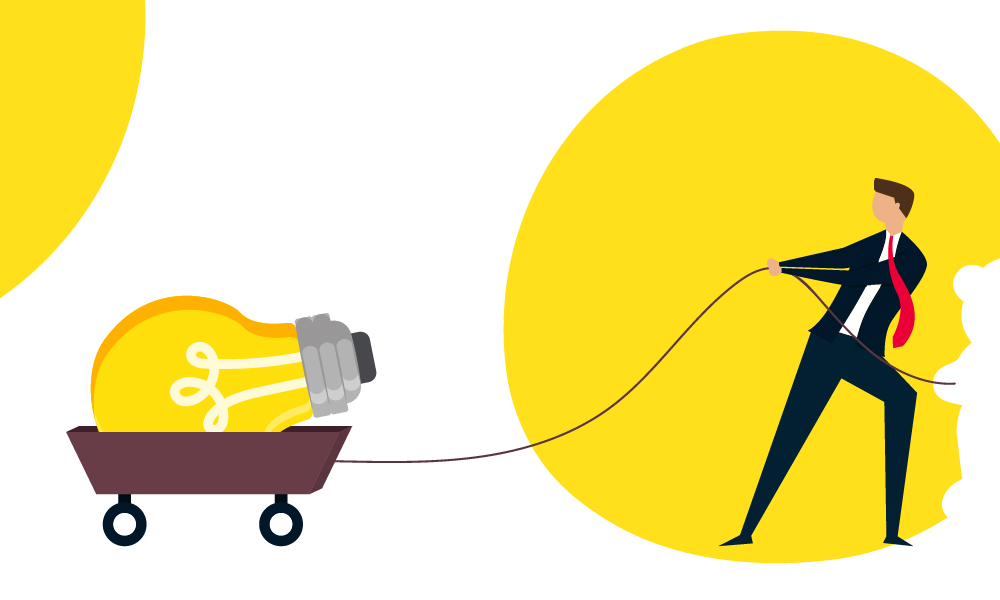
Dear Diary,
Creativity is an act of perceiving the world in different ways.
On World Creativity and Innovation Day, we celebrate creativity by understanding a few things.
Why are we talking about it?
The United Nations designated April 21 as World Creativity and Innovation Day.
UN uses creativity and innovation to achieve 17 Sustainable Development Goals for the betterment of society. This year’s theme is collaboration.
The theme relates to Sustainable Goal #16: Peace, Justice, and Strong Institutions. The day is designated to promote a society where:
Sustainable development is used for peaceful inclusion
There is the accessibility of justice
There are effective, accountable, and inclusive institutions
Inclusive collaboration from all people benefits families both locally and internationally
Ensuring sustainability and accessibility of collaborative practices is for the international community
What is creativity?
One definition of creativity is that it is a combination involving critical thinking about an issue or object and producing an alternative to it. It is the ability to transcend the existing thinking or idea and create an alternative or original idea, methodology or object.
A person is said to be creative when they view things from different perspectives. A test of creativity depends on:
The number of unique alternatives produced
The ability to implement them
The flexibility of tolerance the outcome
Enjoyment of things that come in the process
Why is creativity important?
Creativity allows us to view the problems within the social system and help solving them with innovation. It helps us broaden our perspectives and help us overcome prejudices. Some of the ways creativity helps us are:
It inspires collective thinking
It nurtures ideas
Creativity enables empathy
Enabling alternative thinking methods
It challenges the biases in the society
It builds inter-cultural connections
It nurtures confidence
It nurtures a sense of togetherness
It helps build teamwork and cooperation
How to overcome the mental blocks?
Mental blocks act as a barrier to our way of creativity and motivation and affect our productivity. There are many reasons listed by Harvard Health Letter which affect our ability to think clearly. They are:
Sleep deprivation
Lack of exercise
Unhealthy diet
Stress, anxiety, or depression
Decrease in B12 levels
Imbalance of thyroid hormones
Here are some helpful tips to work your way through mental blockages:
Start with small tasks: Our mental blocks are triggered because we are overwhelmed by work. This can make us stressed or anxious.
The easiest things to work through is to chart out a list and pick the smallest or the easiest task. This will help create a positive mindset to complete other tasks off the list.
Take breaks: Take proper breaks as and when needed. Sitting at the workstation, unable to be productive is one of the signs of mental blocks. Take a walk. It will help in refreshing the mind and clear the headspace.
Sometimes, it helps in finding an alternative to approach to the problem at hand.
Clean up: For some people, cluttered spaces do not gel well. It leads to anxiety and can distract them from the tasks at hand.
Declutter space around you, from time to time, and decrease the chances of getting triggered.
Do not overcommit: Know thy limit! Hard work and putting in extra efforts are great, but do not do it to the point of burnout. Overcommitting can trigger stress and overwhelm the person.
Take care: Mental health, very much like the physical body, needs care. It is important to consider the mental stamina, workload, and bandwidth to complete the tasks at hand. They will help being productive.
Simple ways to take care of yourself:
Sleep for 7-9 hours a day
Exercise at least 2 hours a week
Practice meditation and mindfulness
Write journals
Conclusion:
A creative mind helps us understand the problems or issues of the society and how we can overcome them. It is through the implementation of creativity the world has some of the finest inventions. It has helped our society progress and it will nurture future generations as well.
This World Creativity and Innovation Day let us find ways to nurture creativity and fight the mental blockages. Let us help the society progress further.
That’s all I have for now,
I will write to you soon.
Recent Post
- Our Secret Way to Celebrate National Cocoa Day December 16, 2022
- Healthy Coffee: Your Coffee is Helping You October 14, 2022
- Sharpen the Brain: Top 6 ways to Improve Brain Health October 7, 2022
- Learn about Traveling this World Tourism Day September 30, 2022
- Let’s Talk about International Day of Peace September 23, 2022

INFORMATION
- Editorial Policy
- Our Sponsors
- Corrections & Clarifications
STAY IN TOUCH
Sign up to our mailing list
- +1.212.203.3252
Subscribe to our News
Special Offers
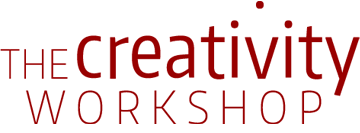
Using the Tools of Creative Writing, Memoir, Art, Photography, Storytelling and Mindfulness

Creativity in Everyday Life
By Shelley Berc
Why is creativity important in everyday life? Simply put, it is because it makes life infinitely interesting and fulfilling. Creativity is a way of living life that embraces originality and makes unique connections between seemingly disparate ideas. Creativity is about living life as a journey into seeing and communicating the extra-ordinariness of the simplest, most every day acts.
We often think about creativity as making something, but in fact the root meaning of the word means ‘to grow’. When we are creative we feel as if the world and all that is in it is vibrantly alive. Creativity’s by-products are some of the major achievements of civilization-from the invention of the wheel to Mozart’s sonatas.
Human beings are essentially born creative-from infancy on we find innovative ways to negotiate life. The most creative people find ways around obstacles because they see them not just as roadblocks but also as opportunities. Creativity expands our perceptions and along with expanded perceptions come new ways of problem solving-from making an exquisite meal when you don’t know how to cook to painting an extraordinary landscape when you are living in a freezing attic and can’t afford a full box of paints.
15 ideas for expressin creativity in everyday life:
1. Make your immediate surroundings as beautiful or eccentric as you can. Experiment with your sense of color, texture, and line. Add an element of surprise or quirkiness to your home decor. The unexpected can jolt you out of complacency and into inspiration.
2. Go somewhere new-as close as a restaurant you’ve never tried or as far as China. New places excite the mind and senses and when we are excited our creative abilities soar.
3. Spend 10 minutes a day dreaming out the window.
4. Don’t censor yourself.
5. Do something new or something old in a brand new way. As Picasso said “I am always doing that which I can not do, in order that I may learn how to do it.”
6. Slow down your perceptions so you savor them-that means eat slowly and taste your food, look closely at the flowers in the garden, spend time writing down and drawing your perceptions.
7. Believe in and follow your ‘What ifs’-what if I was an amazing writer? What if I could make a revolutionary spaceship? What if when I walk across a room it feels like floating?
When we ‘what if’ ourselves, we start to believe we can achieve our dreams. That is the first step to making them come true.
8. Spend 15 minutes looking around with the eyes of a child. Remember that sense of wonderment, love of color, surprise, curiosity and hunger to explore. It can get your creativity going because you are remembering how you were once very imaginative.
9. Take a notebook and pen everywhere you go and jot down your observations. We often have innovative ideas but we forget them if we don’t record them.
10. Don’t over-criticize yourself. At worst it will kill and at best cripple your creative hopes and dreams.
11. Make up a visualization in which you observe yourself imagining and creating effortlessly. Picture yourself loving the process.
12. Just Do It! Creativity is a muscle: use it or lose it. Dance, draw, brainstorm, change your life. The more you use your creativity, the easier it becomes and the better you get at it.
13. Collaborate creatively with like-minded friends-write a journal together, make a quilt, design a new play space, choreograph a dance piece, start a new business.
14. Dress wildly-revel in color and texture. Buy or make a fabulous hat. Don’t be age appropriate.
15. Remember the words of Samuel Becket, on the secret to life-long creativity: “fail, fail again, fail better”!

UPCOMING WORKSHOPS
- Writing With Your Eyes Closed By Frank Bruni, The New York Times Continue reading »
- Why You Should Take A Solo Vacation By BHG Continue reading »
- Why Theater Majors Are Vital in the Digital Age By Tracey Moore, The Chronicle of Higher Education Continue reading »
- What is Creativity? By Shelley Berc Continue reading »
- Use Your Imagination… By Shelley Berc Continue reading »
- Travel and Creativity By AllPsychologyCareers.com Continue reading »
- Time to Nourish our Creativity by Shelley Berc, Boomer Girl Magazine Continue reading »
- Think Less, Think Better by Moshe Bar, The New York Times Continue reading »
- Play, Play, Play by Susie Ellis, The Weekender Continue reading »
- Theatre of the Mind by Shelley Berc Continue reading »
- The Creativity Workshop: My Reflections The Creativity Workshop: My Reflections by K. Renae P., Fund for Teachers fellow Never listen to the naysayers. Smile at… Continue reading »
- Seeing Through the Blur by Alejandro Fogel, Sketchbook Magazine Continue reading »
- The beginning of silent reading changed humans’ interior life By Thu-Huong Ha Continue reading »
- Postcard from Paris by Deborah Murphy, The National Post, Canada Continue reading »
- The Gift of the Amateur by Shelley Berc, Prologue Magazine Continue reading »
- 100 Best Worldwide Vacations to Enrich Your Life by Pam Grout, National Geographic Continue reading »
- My Experience at the Creativity Workshop, NYC My Experience at the Creativity Workshop, NYC By Dan Erickson, on his blog danerickson.net I recently went to New York… Continue reading »
- Why Med Schools Are Requiring Art Classes by Casey Lesser Continue reading »
- La creatività ? Si impara a scuola con il relax e senza tecnologia by Robert Calabro, La Repubblica Continue reading »
- Why Digital Note-Taking will Never Replace the Physical Journal by Bradford Morrow, Literary Hub Continue reading »
- The mistake of seeing only some jobs as creative by Corinne Purtill, Quartz Magazine Continue reading »
- Tap Into Your Inner Artist in a Creativity Workshop Natural Awakenings Magazine Continue reading »
- In Praise of Mediocrity: The pursuit of excellence has infiltrated and corrupted the world of leisure In Praise of Mediocrity: The pursuit of excellence has infiltrated and corrupted the world of leisure By Tim Wu The… Continue reading »
- How to unlock writer’s block How to unlock writer's block By LaDonna Witmer, Creativity Workshop past participant The blank page of paper, staring back at… Continue reading »
- Why Handwriting Is Still Essential in the Keyboard Age The New York Times Continue reading »
- Can You Get More Creative? by A. J. Jacobs, Real Simple Magazine Continue reading »
- For Doctors, Delving Deeper as a Way to Avoid Burnout For Doctors, Delving Deeper as a Way to Avoid Burnout By Siddhartha Mukherjee The New York Times The anatomy laboratory… Continue reading »
- How Fear Chokes Creativity and What to Do About It by Shelley Berc Continue reading »
- How to Cultivate Eureka Moments by Michiko Kakutani Continue reading »
- Doodling for Dollars by Rachel Emma Silverman Continue reading »
- ‘Don’t be afraid to make mistakes’: 11 ways to be more creative 'Don't be afraid to make mistakes': 11 ways to be more creative The Guardian Lauren Child, children's author and illustrator… Continue reading »
- Does Having a Day Job Mean Making Better Art? By Katy Waldman Continue reading »
- 10 Creativity Tips for Teachers: An Inspired Teacher is an Inspiring Teacher by Shelley Berc Continue reading »
- Creativity quotes Creativity Quotes Continue reading »
- Creativity is flying like a bird By Fahri Karakas, Creativity Workshop past participant Continue reading »
- Creativity in Everyday Life by Shelley Berc Continue reading »
- The Creative Academic by Janelle Ward, Inside Higher Ed Continue reading »
- We are born creative geniuses and the education system dumbs us down, according to NASA scientists By Coert Engels Continue reading »
- The Dubai Connection by David Berliner Continue reading »
- Connected Letters, Connected Thinking: How Cursive Writing Helps Us Learn Connected Letters, Connected Thinking: How Cursive Writing Helps Us Learn By Judy Packhem, M. Ed. Landmark 360 Cursive writing is… Continue reading »
- Children need art and stories and poems and music as much as they need love and food and fresh air and play By Philip Pullman Continue reading »
- British Doctors May Soon Prescribe Art, Music, Dance, Singing Lessons By Meilan Solly Continue reading »
- Book of Moments by Shelley Berc, The Paumanok Review Continue reading »
- The Creativity Workshop by Francesca Salidu, Babel Magazine Continue reading »
- Creativity Articles List of Articles Continue reading »
- Take Another Look by Alejandro Fogel, Sketchbook Magazine Continue reading »
- Tapping Creativity by Gary Kuhlmann, In Class, University of Iowa Alumni Magazine Continue reading »
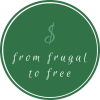
From Frugal to Free
Signs of Burnout: Is Your Work-Life Balance Unsustainable?
Posted: March 7, 2024 | Last updated: March 7, 2024

A good work-life balance is constantly a talking point as the fast-paced working world of today develops, with employee care becoming more of a priority for businesses to achieve productivity. But how important is it really for yourself, your family, or your employees?

Overall Well-Being
Maintaining a good work-life balance is crucial for overall well-being. When an employee can balance professional responsibilities with personal goals and relationships, it can lead to increased productivity and reduced stress. A lack of balance can lead to burnout and even some health issues.

The Importance of Self-Care
To achieve a work-life balance that can help you in personal and professional environments, it’s important to look after yourself in the form of spending time with your family, exercising, and doing things you want to do. This boosts your confidence and increases your happiness at work.

The Impact on Physical Health
A poor work-life balance doesn’t just affect your work and home life, it can also affect your physical health. Long working hours with no time for relaxation or exercise can lead to chronic stress, which in turn can increase the risk of conditions like heart disease and other serious health problems.

The Impact on Mental Health
Mental health can also be affected by a poor work-life balance. Chronic stress and burnout can lead to conditions like depression. A good work-life balance can have great benefits for mental well-being, leading to improved mood, and an increased drive to perform well at work.
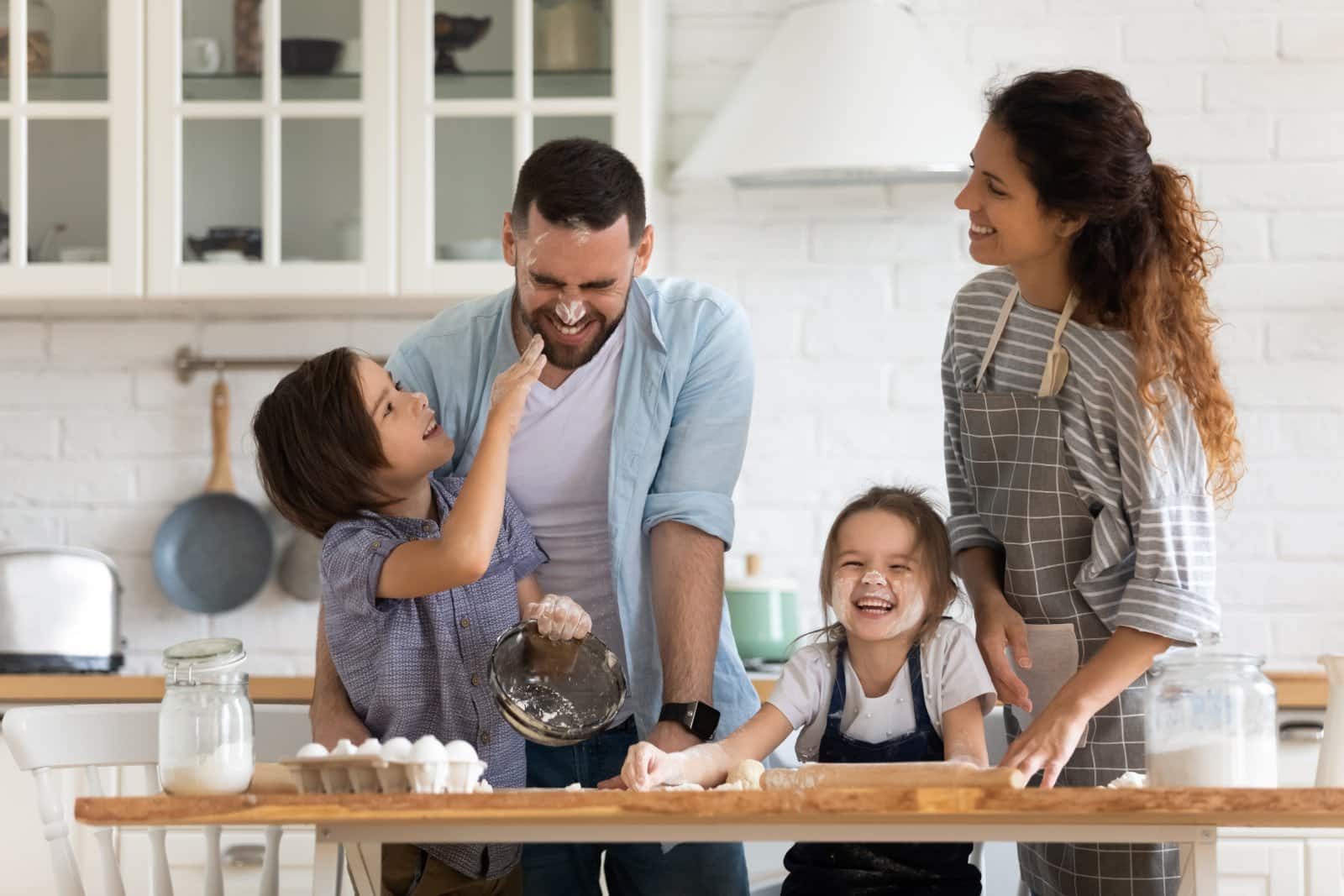
Important Family Time
A good work-life balance is important if you have a family to take care of. Your family will be able to tell if you’re burnt out from work due to your increased stress and lack of patience, so make sure you’re spending quality time with loved ones. Children may feel neglected if their parents are constantly preoccupied with work, which brings us to our next point.
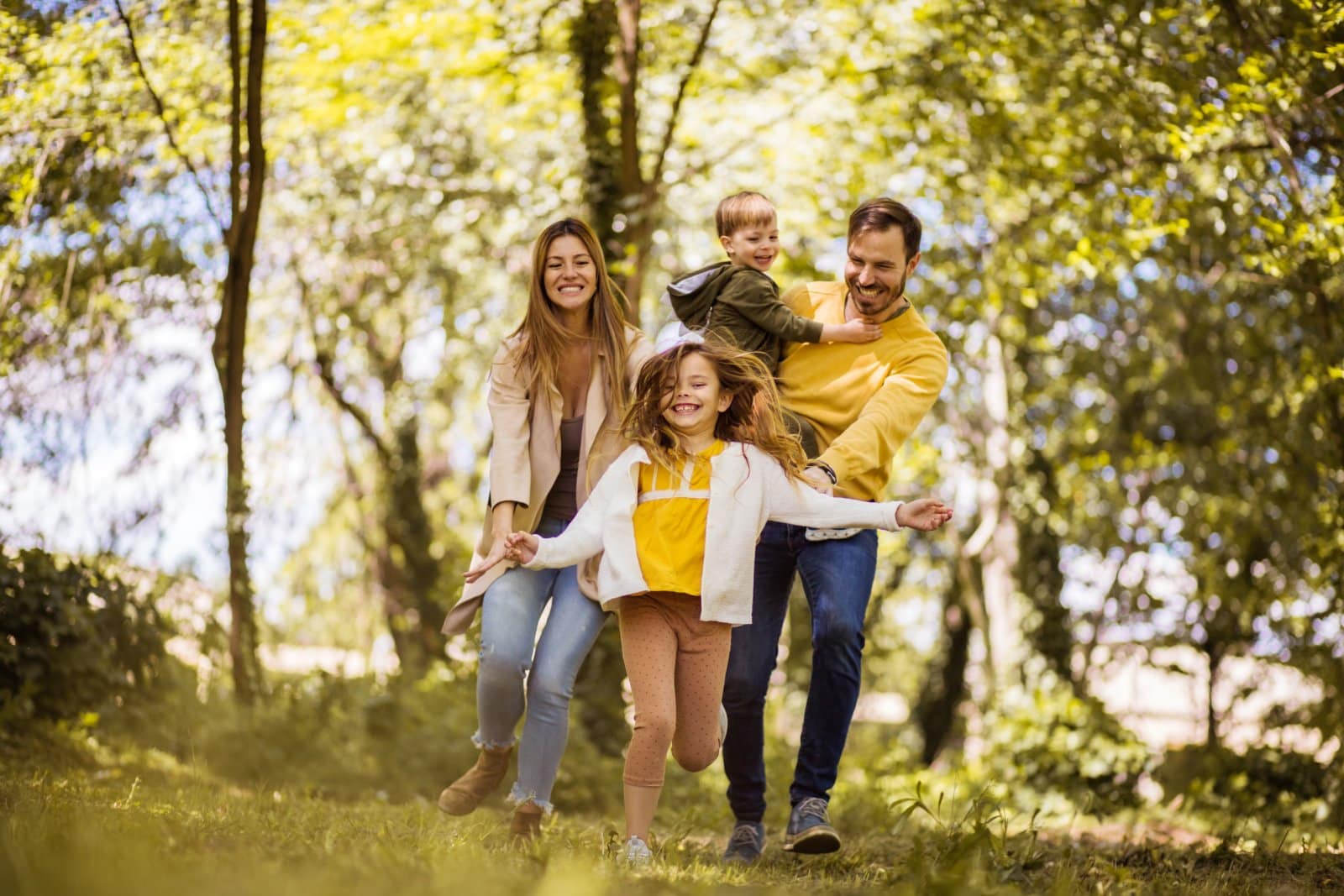
The Impact on Children
Children’s happiness and development can both be affected by their parents’ work-life balance. Parents constantly stressed or preoccupied with work may not be able to provide the attention and care that their children desire.

The Employee Perspective
If you’re an employer, a good work-life balance massively helps in job satisfaction and the overall morale of your team. If you start to promote a healthy balance between work and life, you’ll often see higher productivity and increased loyalty among staff, which leads to lower employee turnover.

The Role of Employers
Without employers who are more willing to promote a healthy work-life balance, employees will struggle to achieve it. Flexible working hours and ensuring a reasonable workload can help promote the idea. Employers can also create a company culture that discourages employees from overworking.

The Impact on Productivity
Some critics of a work-life balance may believe that working longer hours always results in increased productivity. But in reality, overworked employees can experience burnout and make mistakes at work. A good work-life balance can lead to increased productivity as employees are more likely to be motivated and less stressed.

The Impact on Employee Turnover
A good work-life balance is also a key factor in employee retention. Employees are more likely to stay with a company that values their work-life balance and provides the flexibility to manage their personal and professional responsibilities.

The Impact on Employee Engagement
Employees who have a good work-life balance are more likely to be engaged at work which results in a lower employee turnover. A lower turnover means that a team will bond over a longer period, working together more productively as a result.

The Social Aspect
A company that promotes giving employees time to socialize society contributes to a good work-life balance. The team will be more engaged with each other throughout the day and more productive.

The Economic Impact
A good work-life balance can reduce a company’s outgoings.
Reduced healthcare costs associated with stress-related illnesses are a benefit for everyone involved.
Giving employees time to work from home can also save a company on outgoings rather than if they were working in the office.

The Future of Work-Life Balance
The concept of work-life balance is likely to become even more important in the future.
With the advent of technology and the shift towards remote work, the boundaries between work and personal life are becoming increasingly blurred.
It will be crucial for individuals and organizations to find ways to maintain a healthy balance.
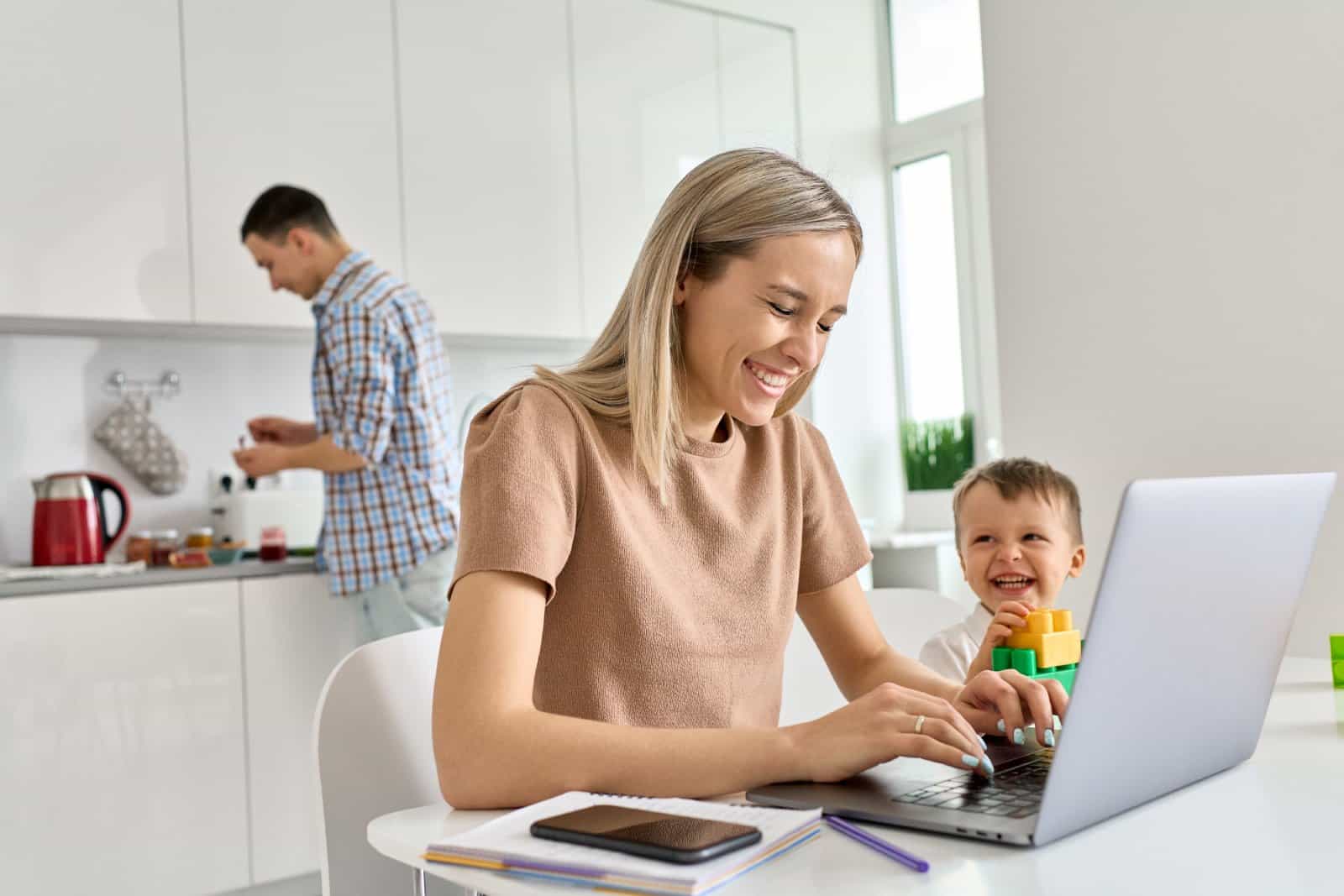
Work-Life Balance and Relationships
Work-life balance can also help to maintain healthy relationships in the workplace and at home with spouses, children, and friends.
Giving more time for leisure means that friendships don’t get lost, and employees are more relaxed when communicating with colleagues and bosses.

The Importance of Leisure Activities
Leisure activities are an essential part of a good work-life balance.
Whether taking up a new hobby, playing a sport, or simply relaxing while reading a book, these activities provide a much-needed break from work and can help reduce stress.

Work-Life Balance and Personal Growth
Employees who have a poor work-life balance may start to feel stuck as they don’t grow as individuals, learn new skills, or engage in activities outside of work.
Work-life balance provides the time to learn new skills which can contribute to their personal development.

Work-Life Balance in Different Professions
For some jobs, it’s harder for employees to maintain a work-life balance, so it’s important that the employer is monitoring the situation and mental well-being of its workforce.
Some jobs, like healthcare, require long working hours leading to more stress, so it’s important that there’s funding in place to ensure burnout doesn’t occur.

The Role of Government Policies
Government policies related to parental leave, flexible working hours, and childcare can significantly reduce an employee’s ability to achieve a good work-life balance.
As an employer, it’s important to be on top of these policies and monitor your employee’s well-being on a more personal level, in case they need more help than the government is providing.

A good work-life balance is not just beneficial but essential for the physical and mental health, of employees.
It helps to improve the quality of life, family relationships, and productivity at work. If you’re an employee who’s experiencing burnout, consider talking with your employer about how to improve your personal situation.

Biden’s New 401(k) Rule: Employers Frustrated as Retirement Planning Responsibilities Shift
The latest Biden administration rule on 401(k) plans is reshaping how employers manage retirement plans. It’s a complex scenario requiring a fresh understanding of fiduciary duties and provider relationships. This rule aims to protect employees but also imposes new responsibilities on employers. Biden’s New 401(k) Rule: Employers Frustrated as Retirement Planning Responsibilities Shift
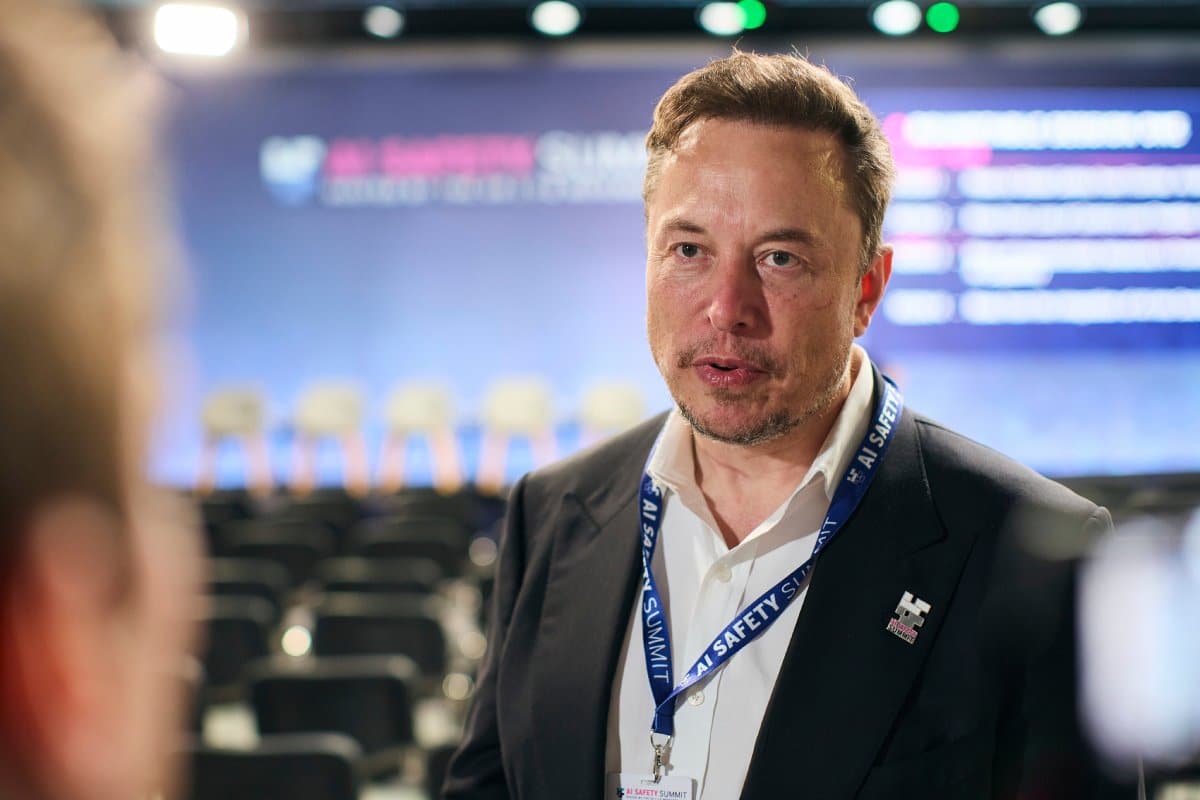
Elon Musk: New Immigration Bill ‘Enables Illegals to Vote’
Elon Musk is calling for prosecutions after the text for a new senate bill on immigration was released. Musk accused the new bill of “enabling illegals to vote.” Elon Musk: New Immigration Bill ‘Enables Illegals to Vote’

Colorado Officials Reject Sanctuary City Status, Warn Against ‘Dangerous Game’
With increasing numbers of migrants arriving in Colorado, public officials have rejected any notion of the state becoming a sanctuary for migrants and asylum seekers. Colorado Officials Reject Sanctuary City Status, Warn Against ‘Dangerous Game’
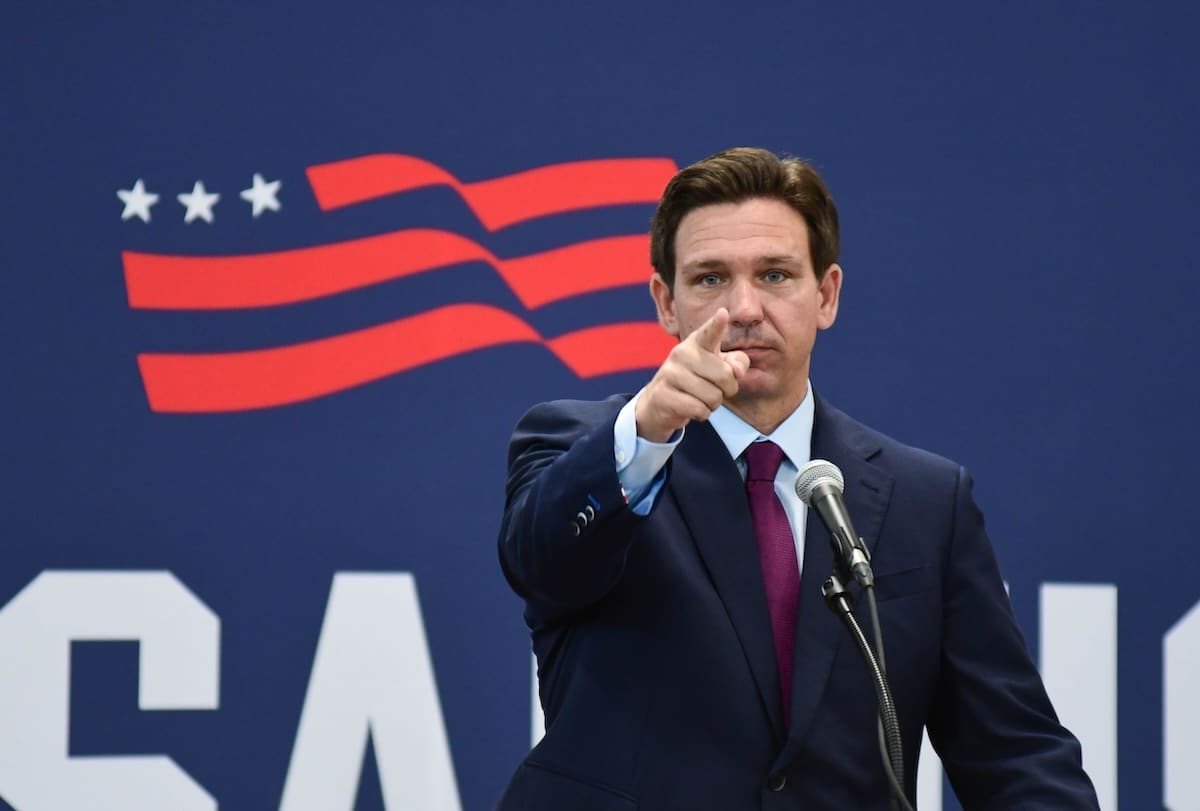
Disney Challenges DeSantis’ “Don’t Say Gay” Rule With a Hefty Lawsuit
Disney is set to appeal its refusal for a lawsuit against Ron DeSantis, who stripped the company of its rights for disagreeing with the Governor’s views on the teaching of sexual orientation in classrooms. Disney Challenges DeSantis’ “Don’t Say Gay” Rule With a Hefty Lawsuit
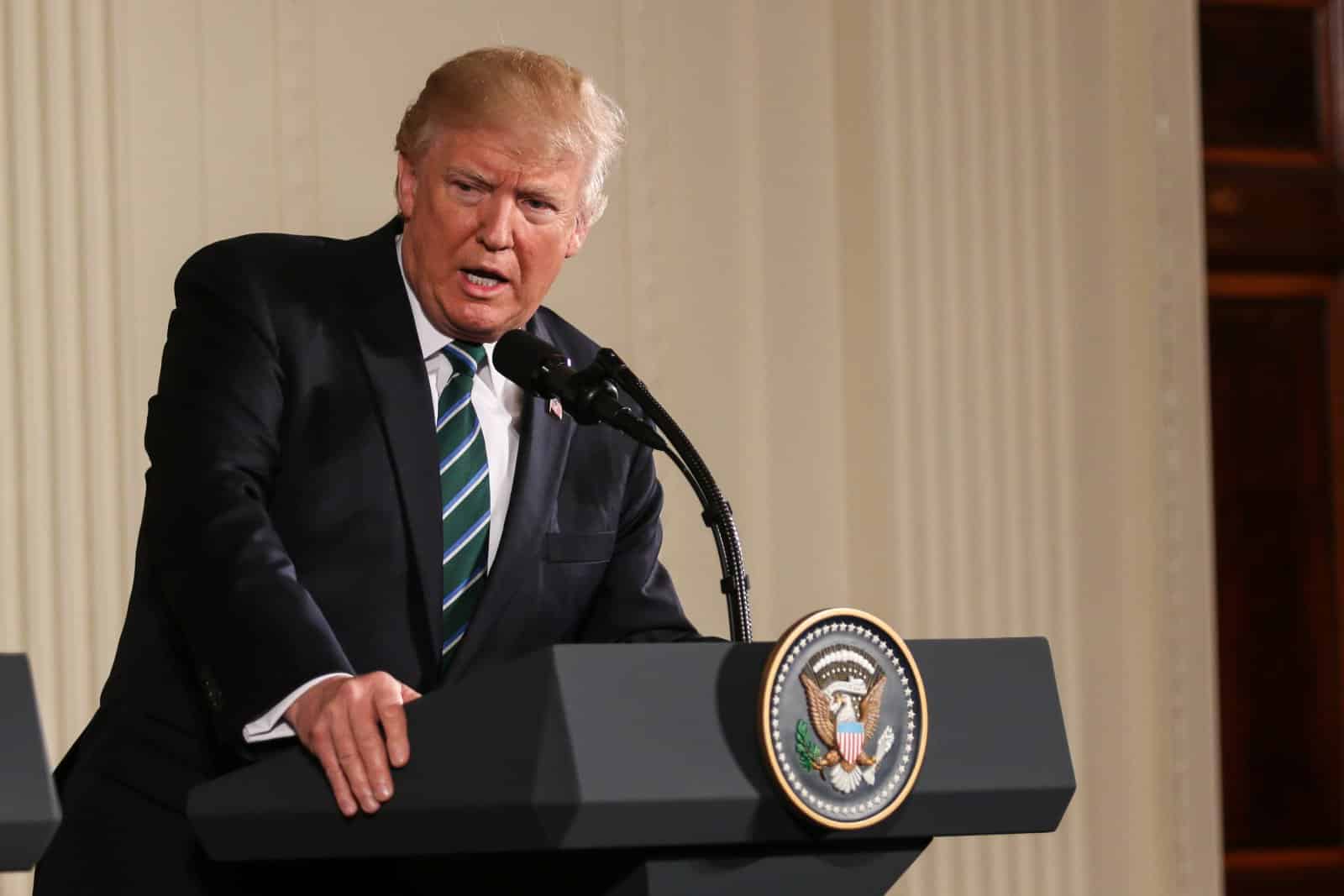
Trump on the Attack as 21 Million Americans Flock to Obamacare, Biden Pushes Forward
An unprecedented surge in health plan enrollments has reignited former President Donald Trump’s commitment to dismantling the program should he secure the GOP nomination once again. Trump on the Attack as 21 Million Americans Flock to Obamacare, Biden Pushes Forward
The post Signs of Burnout: Is Your Work-Life Balance Unsustainable? first appeared on From Frugal to Free .
Featured Image Credit: Shutterstock / Stokkete.
The content of this article is for informational purposes only and does not constitute or replace professional financial advice.
More for You
CNN political commentator Alice Stewart dies
Chris Pratt Mourns Death of Longtime Stunt Double Tony McFarr: "I'll Never Forget His Toughness"
19 Things That Will Happen When You Stop Drinking Alcohol
50 Quick Breads to Make in a Loaf Pan
Young Sheldon’s Jim Parsons finale cameo changes the meaning of the entire series
Best Movies Now on Netflix
"Today" Host Craig Melvin Opens up About His New Career Move
Beyoncé Is a Total Bombshell in a Ruched Dress With a Gaping Bust Cutout
You could get in big trouble for throwing these items in trash
12 Strange Facts About Redheads You Never Knew
17 movie and TV lines actors refused to say on screen: ‘I’m a self-respecting human being, I can’t do this’
The Cut Of Meat That Actually Tastes Better When You Overcook It
Easily Remove Dried Paint Stains With This Common Household Staple
Richard Gere and Uma Thurman arrive at the 2024 Cannes Film Festival premiere of 'Oh Canada'
‘I’m weary of repeating myself’: How do I deal with rich friends who take $22,000 cruises and book $800 hotel rooms? Prices are crazy enough already.
The case against Israel has just collapsed
Dabney Coleman cause of death: Actor who specialized in curmudgeons dies at 92
24 Mouthwatering Dishes From Around the World
Dad who sacrificed his savings to pay for son's college calls student loan forgiveness a 'bitter pill'
8 Things in Your Home You Should Never Vacuum, According to Pros

IMAGES
VIDEO
COMMENTS
7. Art and Creativity. When people say creativity, they usually think about art because it involves imaginative and expressive actions. Art strongly indicates a person's ongoing effort and emotional power. To write this essay effectively, show how art relates to a person's creativity.
It can also be used to relieve anxiety, improve mental health, and enhance positive self-image. Additionally, engaging in creative activities encourages creative thinking, which can foster innovation and creativity in other areas of life. Creating art can also improve physical well-being.
It's usually defined in terms of imagination and innovation and especially related to the production of artwork. Yet creativity isn't necessarily about art per se but is a quality of being ...
But being creative in a particular domain—whether in the arts, in your work, or in your day-to-day life—is a skill. Carve out time to learn and practice. 2. Let your mind wander: Experts recommend "daydreaming with purpose." Make opportunities to let your daydreams flow, while gently nudging them toward the creative challenge at hand.
The impact of happiness on creativity is well-established. However, little is known about the effect of creativity on well-being. Two studies were thus conducted to examine the impact of creativity on subjective well-being. In the first study, 256 undergraduate students (Study 1a) and 291 working adults (Study 1b) self-reported their creativity ...
Creative thinking is the process of nurturing your imagination allowing you to "think out of the box". Being able to train your mind to think creatively helps you invent, problem-solve, create and communicate in fresh, new ways. Moreover, studying art and design, along with diverse disciplines, provides a rich tapestry of perspectives and ...
Creativity truly is a way of life, not an activity or a collection of traits. It's not something to be relegated to certain days or times, comprising only a small portion of our waking hours. It ...
In a rapidly changing world, creativity is important for people and society on many levels - it can help to generate personal satisfaction and be important for economic development. This is why ...
A new study suggests that small acts of creativity in everyday life increase our overall sense of well-being. Many people consider creativity the realm of the tortured soul. Think of Sylvia Plath, Kurt Cobain, or Vincent Van Gogh. Though there is no doubt that Plath, Cobain, and Van Gogh created works of great art, science suggests that they ...
Creativity is important to your well-being. It's one of the most crucial aspects of our humanity. And if you have a job where you can be creative, you're likely to feel happier and more motivated. Creativity is an important element of mental health. It's an important factor in human development and improvement.
Summary. The growing field of scholarship on "everyday creativity" sorts into two strands: (1) studies of "little-c" and "mini-c" creativity - the many products and ideas people create in their everyday lives and (2) studies of the natural ecology of creativity - how creative products, both eminent and humble, come about in ...
and I wanted to capture his essence with brush and paint. 3 important reasons to be more creative … Creativity predicts a longer life. In this Scientific American article, "researchers found that only creativity—not intelligence or overall openness—decreased mortality risk.One possible reason creativity is protective of health is because it draws on a variety of neural networks within ...
Essentially, creativity is a tool that can make work fun, life easier, save you from boredom, and help you to feel more fulfilled. Creativity will challenge your mind, enhance your brain, and give you the ability to think outside of the box. The impact of creativity can be seen in our physical body and keeps our brain healthy too, which is one ...
Creativity engages the mind. Creativity frees the mind in a way that enables a person to absorb knowledge more easily. It makes processing learning more efficient. Creativity enables alternative ways of thinking. It unblocks old patterns or habits of thinking. It allows for non-linear thinking. Creativity enables empathy.
Creativity is the ability to generate a thought or an idea that is completely new, appealing, and useful. Creative thinking is a skill that enables you to come up with original and unconventional ideas. Creative thinking expresses itself in a multitude of ways. A graphic artist creates a brilliant logo.
After all, it enables us to change our lives for the better. 8. Creativity Makes Learning Fun. Learning is supposed to be fun. But sometimes it feels like learning is boring. That's why creativity is so important. Because creativity allows us to connect the dots between seemingly unrelated concepts.
This type of essay offers a unique platform to focus on personal insights, historical analysis, or the impact of creativity across various fields. Engaging Prompts to Kickstart Your Creativity Essay. Prompt 1: Discuss how a moment of creative insight led to an unexpected outcome or discovery in your personal life or in a historical context.
Gabriella Rosen Kellerman, a physician and chief product and chief innovation officer at BetterUp, and Martin Seligman, a professor of psychology at the University of Pennsylvania, say there are ...
It helps us broaden our perspectives and help us overcome prejudices. Some of the ways creativity helps us are: It inspires collective thinking. It nurtures ideas. Creativity enables empathy. Enabling alternative thinking methods. It challenges the biases in the society. It builds inter-cultural connections. It nurtures confidence.
2. Go somewhere new-as close as a restaurant you've never tried or as far as China. New places excite the mind and senses and when we are excited our creative abilities soar. 3. Spend 10 minutes a day dreaming out the window. 4. Don't censor yourself. 5. Do something new or something old in a brand new way.
Essay on Art and Creativity. This essay sample was donated by a student to help the academic community. Papers provided by EduBirdie writers usually outdo students' samples. Children deserve an education rich in arts opportunities. There is a direct correlation between exposure to the arts and creating successful, well-rounded students as well ...
Importance Of Creativity Essay. 874 Words4 Pages. Creativity can be defined as the willingness to be courageous, adventurous, daring and to try new things. Creative people take risks and produce some of the best ideas. When designing and making, creative work is likely to bring about original knowledge which will incur risk taking.
Mental health can also be affected by a poor work-life balance. Chronic stress and burnout can lead to conditions like depression. A good work-life balance can have great benefits for mental well ...